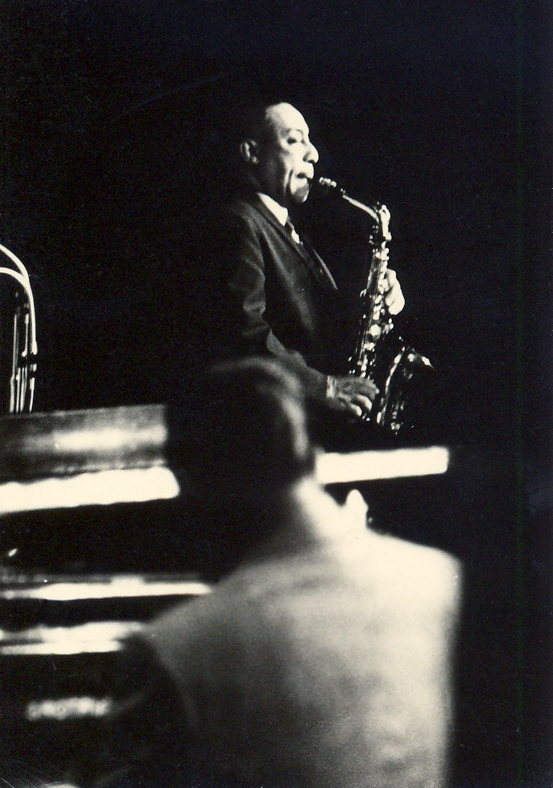
ほんもの(本物)らしさとは?
On Authenticity
Artistic
authenticity: The saxophonist Johnny Hodges
at work, playing jazz. The philosopher Jean-Paul Sartre said that jazz
music represents artistic freedom and personal authenticity.
☆ 真正性(ほんものらしさ)とは、心理学、実存心理療法、実存主義哲学、美学などの分野における人格概念である。実存主義において、真正性とは、社会的な同 調圧力があるにもかかわらず、人の行動がその人の価値観や願望と一致している度合いのことである。意識的な自己は、自らの意思とは無関係に、価値や意味を 持たない不条理な世界に投げ込まれたという「ゲヴォルフェンハイト(Geworfenheit)」の状態を受け入れ、それによって自己とは異なる外部の力 や影響に遭遇する。人の誠実さの欠如は、他人や自分自身に対する不誠実さと考えられている。したがって、誠実さは、デルフォイの神託の教えである「汝自身 を知れ」。芸術における真正性について、哲学者ジャン・ポール・サルトルとテオドール・アドルノは、アメリカの音楽ジャンルであるジャズについて正反対の 見解を述べた。サルトルはジャズは真正であると述べ、アドルノはジャズは真正ではないと述べた。多くの音楽サブカルチャーでは、アーティストが(創造性、 音楽性、または人格において)本物でないことを理由に、そのコミュニティからポーズを取っているとみなされないよう、芸術的な本物性を必要としている。芸 術的な本物性は、ロック(パンクロックやヘビーメタルなど)、クラブミュージック(ハウスやテクノなど)、ヒップホップなど、多くの音楽ジャンルに不可欠 である。 18世紀、ロマン派の哲学者たちは、直感、感情、そして、啓蒙時代の知性主義に対する必要なバランスとして、直感と感情、自然とのつながりを推奨した。 20世紀には、英語が母国語ではない実存主義哲学者の著作を中心に、英米の真正性への関心が高まった。そのため、実存主義という用語の忠実で真実かつ正確 な翻訳については多くの議論が交わされ、その結果、哲学者ウォルター・カウフマンは実存主義哲学者の規範をまとめた。カウフマンの正典には、デンマーク人 のセーレン・キェルケゴール(1813年~1855年)、ドイツのマルティン・ハイデガー(1889年~1976年)、フランスのジャン=ポール・サルト ル(1905年~1980 年)が含まれている。これらの実存主義者たちにとって、意識的な自己とは、外的力(例えば「投げ出された状態」など)や自己とは異なる知的な影響力といっ た、不条理で唯物論的な世界における存在(存在と生きること)と折り合いをつけるものである。 個人の真実は、外的世界が自己に及ぼす影響に対して人がどのように行動し、変化するかによって示される。芸術家においては、芸術における真正性は、芸術家 の価値観に忠実な芸術作品を意味する。心理学の分野では、真正性は、社会からの外的な要求(社会的慣習、親族関係、義務など)に従うのではなく、真の自己 と個人的な価値観に従って生活する人を指す。社会通念、親族関係、義務などである。 実存主義の哲学者であるキルケゴール、ニーチェ、マルティン・ハイデガーらは、社会の規範を構成する社会的構築物の実存的・存在論的意義を調査し、実在性 を特定、説明、定義した。ジャーナリストにとって、社会規範を盲目的に受け入れるのではなく、職業倫理と個人的な価値観に忠実である道を選ぶことが、知的 にも真実味のある報道を生み出すことに貢献する。しかし、ジャーナリズムの実践においては、出版社のビジネス上の要請によって、ジャーナリストの信頼性 (職業的および個人的)は常に否定されている。
★芸術における真正性は、芸術作品や芸術的パフォーマンスが真正であるとみなされるさまざまな方法で明らかになる。最初の区別は、名目上の真正性と表現上の真正性(expressive authenticity)である。最初の意味において、名目上の真正性(nominal authenticity)
は、芸術作品の作者を正しく特定すること、俳優や女優が劇作家によって書かれた戯曲中の役をどの程度正確に解釈すること、音楽家が芸術的な作曲をどの程度
作曲者の意図に忠実に演奏すること、芸術作品がどの程度そのジャンルの芸術的伝統に合致することである。第2の意味において、表現上の真正性とは、芸術作
品が主題について内在する権威をどの程度備えているか、また芸術家の意図がどの程度作品に反映されているかということである。
鑑賞者、聴衆、視聴者にとって、体験の真正性は、芸術作品を本来の環境で初めて目にしたときにしか味わえない感情である。彫刻や絵画の場合、現代美術館を
訪れる人々は、芸術家が作品を制作した当時の展示環境を模した空間で展示された芸術作品に出会う。そのため、美術館を訪れる人々は、美術品がオブジェとし
て展示されているのを目にするだけで、本来の展示環境において美術品を見ることによって得られる美的体験、すなわち芸術家の意図を理解できない可能性があ
る[3]。
芸術作品の真正性は、国際連合教育科学文化機関(ユネスコ)の世界遺産リストへの登録要件である。1994年の奈良文書(Nara Document on Authenticity)では、芸術作品の真正性は、形やデザイン、素材や物質、用途や機能、伝統や技法、場所や環境、そして作品に込められた精神や感情によって表現できると規定されている。
| Authenticity
is a
concept of personality in the fields of psychology, existential
psychotherapy, existentialist philosophy, and aesthetics. In
existentialism, authenticity is the degree to which a person's actions
are congruent with their values and desires, despite external pressures
to social conformity. The conscious self comes to terms with the
condition of Geworfenheit, of having been thrown into an absurd world
(without values and meaning) not of their own making, thereby
encountering external forces and influences different from and other
than the Self.[2] A person’s lack of authenticity is considered bad
faith in dealing with other people and with one's self; thus,
authenticity is in the instruction of the Oracle of Delphi: “Know
thyself.”[3] Concerning authenticity in art, the philosophers Jean Paul
Sartre and Theodor Adorno held opposing views and opinions about jazz,
a genre of American music; Sartre said that jazz is authentic and
Adorno said that jazz is inauthentic. Many musical subcultures require
artistic authenticity, lest the community consider an artist to be a
poseur for lacking authenticity (creative, musical, or personal);[4]
artistic authenticity is integral to many genres of music, including
but not limited to genres of rock (such as punk rock and heavy metal),
club music (such as house and techno), and hip-hop.[5] In the 18th century, Romantic philosophers recommended intuition, emotion, and a connection to Nature as the necessary counterbalances to the intellectualism of the Age of Enlightenment.[6][clarification needed] In the 20th century, Anglo–American preoccupations with authenticity centered on the writings of existentialist philosophers whose native tongue is not English; therefore, the faithful, true, and accurate translation of the term existentialism was much debated, to which end the philosopher Walter Kaufmann assembled a canon of existentialist philosophers. Kaufmann's canon includes the Dane Søren Kierkegaard (1813–1855), the German Martin Heidegger (1889–1976), and the Frenchman Jean-Paul Sartre (1905–1980). For these existentialists, the conscious Self comes to terms with existence (being and living) in an absurd, materialist world featuring external forces, e.g. Geworfenheit (Thrown-ness), and intellectual influences different from and other than the Self. Personal authenticity is exhibited in how a person acts and changes in response to the external world's influences upon the Self. Among artists, authenticity in art describes a work of art faithful to the artist's values.[7] In the field of psychology, authenticity identifies a person living life in accordance with their true Self and personal values rather than according to the external demands of society, such as social conventions, kinship, and duty.[8] To identify, describe, and define authenticity, existential philosophers like Kierkegaard, Nietzsche, and Martin Heidegger investigated the existential and ontological significance of the social constructs that compose the norms of society. For a journalist, not blindly accepting social norms contributes to producing intellectually authentic reportage, achieved by the reporter choosing to be true to their professional ethics and personal values. Yet, in the praxis of journalism, the reporter’s authenticity (professional and personal) is continually contradicted by the business requirements of corporate publishing.[9] |
真正性(ほんものらしさ)とは、心理学、実存心理療法、実存主義哲学、
美学などの分野における人格概念である。実存主義において、真正性とは、社会的な同調圧力があるにもかかわらず、人の行動がその人の価値観や願望と一致し
ている度合いのことである。意識的な自己は、自らの意思とは無関係に、価値や意味を持たない不条理な世界に投げ込まれたという「ゲヴォルフェンハイト
(Geworfenheit)」の状態を受け入れ、それによって自己とは異なる外部の力や影響に遭遇する[2]。人の誠実さの欠如は、他人や自分自身に対
する不誠実さと考えられている。したがって、誠実さは、デルフォイの神託の教えである
「汝自身を知れ」[3]。芸術における真正性について、哲学者ジャン・ポール・サルトルとテオドール・アドルノは、アメリカの音楽ジャンルであるジャズに
ついて正反対の見解を述べた。サルトルはジャズは真正であると述べ、アドルノはジャズは真正ではないと述べた。多くの音楽サブカルチャーでは、アーティス
トが(創造性、音楽性、または人格において)本物でないことを理由に、そのコミュニティからポーズを取っているとみなされないよう、芸術的な本物性を必要
としている[4]。芸術的な本物性は、ロック(パンクロックやヘビーメタルなど)、クラブミュージック(ハウスやテクノなど)、ヒップホップなど、多くの
音楽ジャンルに不可欠である[5]。 18世紀、ロマン派の哲学者たちは、直感、感情、 そして、啓蒙時代の知性主義に対する必要なバランスとして、直感と感情、自然とのつながりを推奨した[6][注釈が必要]。20世紀には、英語が母国語で はない実存主義哲学者の著作を中心に、英米の真正性への関心が高まった。そのため、実存主義という用語の忠実で真実かつ正確な翻訳については多くの議論が 交わされ、その結果、哲学者ウォルター・カウフマンは実存主義哲学者の規範をまとめた。カウフマンの正典には、デンマーク人のセーレン・キェルケゴール (1813年~1855年)、ドイツのマルティン・ハイデガー(1889年~1976年)、フランスのジャン=ポール・サルトル(1905年~1980 年)が含まれている。これらの実存主義者たちにとって、意識的な自己とは、外的力(例えば「投げ出された状態」など)や自己とは異なる知的な影響力といっ た、不条理で唯物論的な世界における存在(存在と生きること)と折り合いをつけるものである。 個人の真実は、外的世界が自己に及ぼす影響に対して人がどのように行動し、変化するかによって示される。芸術家においては、芸術における真正性は、芸術家 の価値観に忠実な芸術作品を意味する[7]。心理学の分野では、真正性は、社会からの外的な要求(社会的慣習、親族関係、義務など)に従うのではなく、真 の自己と個人的な価値観に従って生活する人を指す[8]。社会通念、親族関係、義務などである[8]。 実存主義の哲学者であるキルケゴール、ニーチェ、マルティン・ハイデガーらは、社会の規範を構成する社会的構築物の実存的・存在論的意義を調査し、実在性 を特定、説明、定義した。ジャーナリストにとって、社会規範を盲目的に受け入れるのではなく、職業倫理と個人的な価値観に忠実である道を選ぶことが、知的 にも真実味のある報道を生み出すことに貢献する。しかし、ジャーナリズムの実践においては、出版社のビジネス上の要請によって、ジャーナリストの信頼性 (職業的および個人的)は常に否定されている[9]。 |
| Existential perspectives Søren Kierkegaard According to Kierkegaard, personal authenticity depends upon a person finding an authentic faith and, in so doing, being true to themselves.[clarification needed] Moral compromises inherent to the ideologies of bourgeois society and Christianity challenge the personal integrity of a person who seeks to live an authentic life as determined by the self.[10] A mass-culture society[definition needed] diminishes the significance of personal individuality, by way of social “levelling” through news media that provide people with beliefs and opinions constructed by someone other than themselves. A person can attain authentic faith by facing reality and choosing to live according to the facts of the material world,[dubious – discuss] or can deny authentic faith by passively accepting religious faith.[10] Kierkegaard’s philosophy shows that personal authenticity is a personal choice based upon the experience of the real world;[10] in Practice in Christianity (1850), Kierkegaard wrote: Therefore, it is a risk to preach, for as I go up into that holy place — whether the church is packed or as good as empty, whether I, myself, am aware of it or not, I have one listener more than can be seen, an invisible listener, God in heaven, whom I certainly cannot see, but who truly can see me.... Truly, it is a risk to preach! Most people, no doubt, have the idea that stepping out on the stage as an actor to venture into the danger of having all eyes focused on one requires courage. Yet, in one sense, this danger, like everything on the stage, is an illusion because the actor, of course, is personally outside it all; his task is precisely to deceive, to dissemble, to represent someone else, and to reproduce, accurately, someone else’s words. On the other hand, the proclaimer of Christian truth steps forward into a place where, even if the eyes of all are not focused on him, the eye of an omniscient one is. His task is: to be himself, and in a setting, God’s house, which, all eyes and ears, requires only one thing of him — that he should be himself, be true. That he should be accurate, that is, that he, himself, should be what he proclaims [to be], or at least strive to be that, or at least be honest enough to confess, about himself, that he is not that.... How risky it is to be the I who preaches, the one speaking, an I who, by preaching and as he preaches, commits himself unconditionally, displays his life so that, if possible, one could look directly into his soul — to be this I, that is risky! — Søren Kierkegaard, Practice in Christianity (1850) pp. 234–235 Friedrich Nietzsche Personal authenticity can be achieved—without religion, which requires accepting pre-determined virtues (eternal valuations) as unquestionably true. In living authentically, a person elevates himself/herself above the mass culture to transcend the limits of conventional morality, thereby personally determining what is and what is not good and bad, without the pre-determined virtues of conformity “on account of which we hold our grandfathers in esteem”. An authentic life is achieved by avoiding the “herding animal morality”.[11] To “stand alone [is to be] strong and original enough to initiate opposite estimates of value, to transvaluate and invert ‘eternal valuations’”.[11] Common to the existential perspectives of Kierkegaard and Nietzsche are “the responsibilities they place on the individual to take an active part in the shaping of one’s beliefs, and then to be willing to act on that belief”.[10] Jean-Paul Sartre It is difficult to describe authenticity intelligibly. One possibility is to describe instead the negative space surrounding the condition of being inauthentic by giving examples.[12] To that end, the novels of Jean-Paul Sartre make authenticity conceptually intelligible through the stories of anti-heroic characters, people who base their actions upon external, psychological pressures — such as the social pressure to appear to be a certain kind of person; the pressure to adopt a given way of life; and the pressure to prostitute personal integrity (moral values and aesthetic standards) in exchange for the comfort (physical, mental, and moral) of social conformity. The novelist Sartre explains existential philosophy through characters who do not understand their reasoning for acting as they do—people who ignore crucial facts about their own lives to avoid learning about being an inauthentic person with an identity defined from outside the self. Absolute freedom is the vertiginous experience necessary for being authentic, yet such freedom can be so unpleasant as to impel people to choose an inauthentic life. As an aspect of authenticity, absolute freedom determines a person’s relation with the real world, a relation not based upon or determined by a system of values or an ideology. In this manner, authenticity is connected with creativity, and the will to act must be born of the actor. In that vein, Heidegger speaks of absolute freedom as modes of living determined by personal choice. Sartre identified, described, and explained what is an inauthentic existence, not to define what is an authentic mode of living.[13] Erich Fromm Erich Fromm proposed a very different definition of authenticity in the mid-twentieth century.[14] He considered behavior of any kind, even that wholly in accord with societal mores, to be authentic if it results from personal understanding and approval of its drives and origins, rather than merely from conformity with the received wisdom of the society. Thus, a Frommean authentic may behave consistently in accord with cultural norms, if those norms appear on consideration to be appropriate, rather than simply in the interest of conforming with current norms. Fromm thus considers authenticity to be a positive outcome of enlightened and informed motivation, rather than a negative outcome of rejection of the expectations of others. He described the latter condition – the drive primarily to escape external restraints typified by the "absolute freedom" of Sartre – as "the illusion of individuality",[15] as opposed to the genuine individuality that results from authentic living. |
実存的観点 セーレン・キェルケゴール キェルケゴールによると、個人の誠実さは、人が本物の信仰を見つけ、そうすることで自分自身に忠実であるかどうかにかかっている[注釈が必要]。ブルジョ ワ社会とキリスト教のイデオロギーに内在する道徳的妥協は、自己によって決定された本物の生き方を求める人の 自己によって決定された本物の生き方を求める人の人格的完全性を脅かす。大衆文化社会[定義が必要]では、ニュースメディアを通じて、自分以外の誰かが構 築した信念や意見を人々に提供することで、社会的「平準化」を行い、個人の個性の重要性を低下させる。人は現実と向き合い、物質世界の事実に基づいて生き ることを選択することで、本物の信仰を得ることができる[疑わしい - 議論する]、あるいは宗教的信仰を無批判に受け入れることで、本物の信仰を否定することもできる[10]。キェルケゴールの哲学は、個人の本物らしさは現 実世界の経験に基づく個人の選択であることを示している[10]。キェルケゴールは『キリスト教の修行』(1850年)の中で次のように書いている。 したがって、説教することは危険を伴う。私がその神聖な場所に向かうとき、教会が満員であろうと、ほとんど誰もいないであろうと、私自身がそのことに気づ いているか否かに関わらず、目に見える以上の数の聞き手がいる。目に見えない聞き手、天にいる神、私はその神を確かに見ることができないが、神は私を確か に見ることができているのだ。本当に、説教することは危険を伴う!俳優として舞台に上がり、すべての人の視線が自分に注がれるという危険を冒すには勇気が 必要だという考えは、ほとんどの人が持っているだろう。しかし、ある意味で、この危険は舞台上のすべてと同様に幻想である。なぜなら、俳優は当然のことな がら、そのすべての外側にいるからだ。彼の任務は、まさに人を欺き、偽装し、誰かを演じ、誰かの言葉を正確に再現することなのだ。一方、キリスト教の真理 を説く者は、たとえすべての人の目が彼に向けられていなくても、全知全能の神の目が向けられている場所に踏み込んでいく。彼の任務は、自分自身であるこ と、そして、神を礼拝する場である教会という設定において、すべての目と耳が彼に求めるものはただ一つ、つまり、自分自身であり、真実であることである。 正確であるべきだ。つまり、自分が宣言する通りの人間になるべきだ。少なくともそうなるように努力すべきだ。少なくとも、自分自身について、自分はそうで はないと正直に告白できるくらいになるべきだ。説教する私、語る私、説教し、説教することによって無条件に自分自身を委ねる私、自分の人生をさらけ出し て、できれば他人の魂の奥底まで見透かされるような私になることは、どれほど危険なことだろうか! — Søren Kierkegaard, Practice in Christianity (1850) pp. 234–235 フリードリヒ・ニーチェ 宗教に頼ることなく、個人の誠実さを獲得することは可能である。宗教は、あらかじめ決められた美徳(永遠の評価)を疑いなく真実として受け入れることを要 求する。誠実に生きることで、人は大衆文化から抜け出し、従来の道徳の限界を超越し、自らが良いものと悪いものを決定する。それは、従順という「祖父を尊 敬する理由」のためにあらかじめ決められた美徳に従うことではない。「群れをなす動物的道徳」を避けることで、真の生き方が実現する[11]。「孤独に立 つ」とは、「価値の逆評価を率先し、‘永遠の評価’を転覆し、再評価するだけの強さ、独創性を持つ」ことである[11]。キェルケゴールとニーチェの共通 点は、「信念の形成に積極的に参加し、その信念に基づいて行動する責任を個人に課す」ところにある[10]。 ジャン=ポール・サルトル 真正性をわかりやすく説明するのは難しい。その可能性の一つは、偽りの状態を取り囲む否定的な空間について、例を挙げて説明するという方法である [12]。その目的のために、ジャン=ポール・サルトルの小説は、反英雄的人物、つまり、ある種の人物であるように見えるようにという社会的圧力、特定の 生き方を採用するようにという圧力、そして、社会的適合の快適さ(身体的、精神的、道徳的)と引き換えに個人の誠実さ(道徳的価値観や美的基準)を売り渡 すという圧力といった、外的、心理的な圧力に基づいて行動する人々の物語を通して、真正性を概念的に理解しやすくしている。例えば、ある種の人物であるよ うに見えるようにという社会的圧力、特定の生き方を採用するという圧力、そして社会的適合がもたらす快適さ(身体的、精神的、道徳的)と引き換えに個人の 誠実さ(道徳的価値観や美的基準)を犠牲にすることを強いる圧力などである。小説家のサルトルは、自分の行動の理由を理解していない登場人物を通して実存 主義哲学を説明している。 絶対的自由は、本物であるために必要な目まいがするような経験であるが、そのような自由は不快なものであり、偽りの人生を選ぶように人々を駆り立てること もある。真正性の一側面として、絶対的自由は、価値観やイデオロギーに基づくものでも、それらによって決定されるものでもない、現実世界との関係を決定づ ける。このように、真正性は創造性と結びついており、行動する意志は行動者自身から生まれるものでなければならない。その点において、ハイデガーは、絶対 的自由を個人の選択によって決定される生き方として語っている。サルトルは、真正な生き方とは何かを定義するのではなく、真正でない生き方とは何かを特定 し、説明し、説明した[13]。 エーリッヒ・フロム エーリッヒ・フロムは、20世紀半ばに、まったく異なる真正性の定義を提案した[14]。彼は、社会通念に完全に一致する行動であっても、社会の常識に単 に従うのではなく、個人の欲求や原点を理解し、承認した結果であれば、真正性があるとみなした。したがって、フロムが考える「本物の」人は、現在の規範に 合わせるという理由ではなく、熟考の結果としてその規範が適切であると判断される場合、文化的な規範に一貫して従う行動をとる可能性がある。フロムは、本 物とは他人の期待を拒絶するという否定的な結果ではなく、啓発され、情報に基づいた動機付けの肯定的な結果であると考えている。彼は後者の状態、つまりサ ルトルの言う「絶対的自由」に代表されるような、外部の束縛から逃れたいという欲求を、「個性の幻想」[15]と表現した。これは、真の個性とは、真の生 き方によって得られるものであるという考え方とは対照的である。 |
| Musical subculture See also: Rockism and Punk ideologies 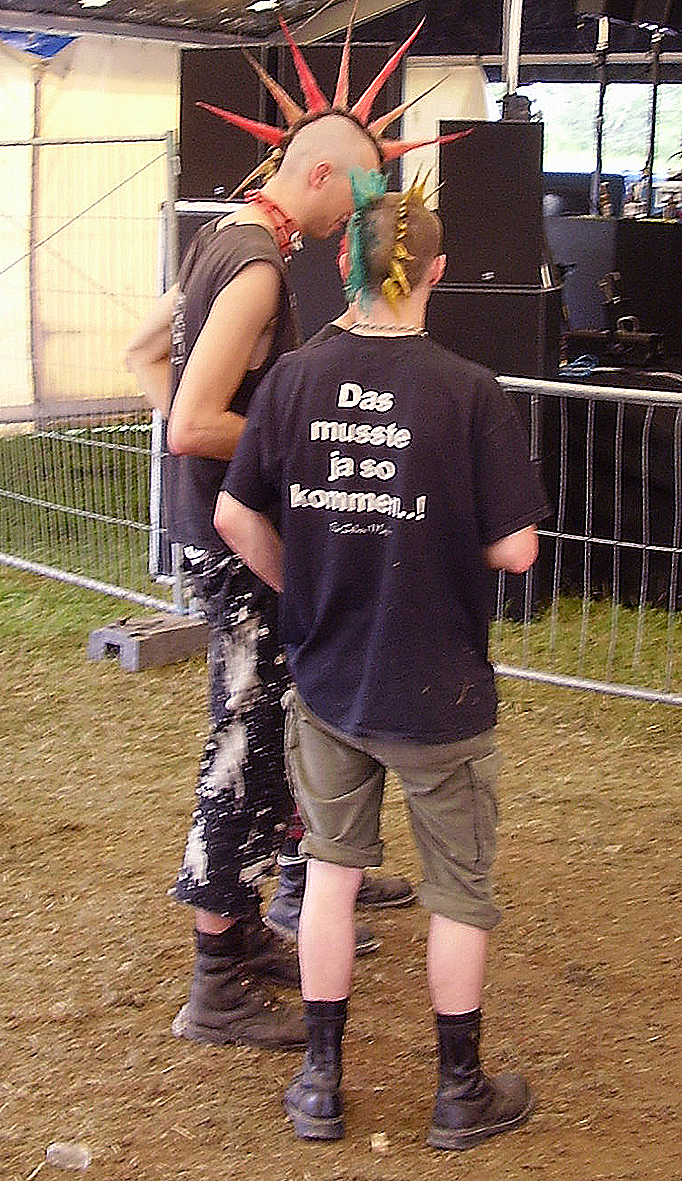 The punk rock subculture dismisses and excludes poseurs deemed not to understand, abide, or live the value system of the subculture. Some genres of rock music, especially the subcultures of punk and heavy metal, require a great deal of artistic authenticity from its musicians and fans and criticize and exclude musicians, composers, and bands they assess as being poseurs — insufficiently authentic or inauthentic as artists.[4] A poseur is an artist or a musical band who copies the dress, the style of speech, and the manners of the subculture, yet is excluded for not understanding the artistic philosophy, not understanding the sociology, and not understanding the value system of the subculture; talking the talk, without walking the walk.[16] The authenticity of an artist has three bases: (I) long-term dedication to the music scene; (II) historical knowledge of the subculture; and (III) personal integrity (inner voice) for correct artistic choices.[17] At one extreme of the heavy-metal genre, exists the subgenre of black metal whose adherents value above all else, artistic authenticity, emotional sincerity, and extremity of expression. Black metal artists emphatically profess that black metal performances are not for entertainment or spectacle, but rather that the extreme expression of such performances, are ritual expression, achieved through transcendence of the body and the self.[18] In light of such systems of moral value in the arts, a working-class band, by accepting a formal recording contract, might appear to be sell outs within the heavy metal and punk rock communities.[5] The academic Deena Weinstein said that “The code of authenticity, which is central to the heavy metal subculture, is demonstrated in many ways”, such as by clothing, an emotional singing voice, and thematic substance to the songs.[16] |
音楽サブカルチャー 関連項目:ロックイズム、パンク思想  パンクロックのサブカルチャーは、その価値観を理解、遵守、実践していないと見なされるポーズをとる者を否定し、排除する。 ロックミュージックのジャンル、特にパンクやヘビーメタルのサブカルチャーでは、ミュージシャンやファンに芸術的な真正性を強く求め、真正性が不十分また は真正性を持たないアーティストであると判断したミュージシャン、作曲家、バンドを批判し排除する傾向がある[4]。ポーズーとは、 サブカルチャーの服装、話し方、マナーを真似る一方で、サブカルチャーの芸術哲学、社会学、価値観を理解していないために排除されるアーティストやバンド のことである。 アーティストの真贋は、3つの基準に基づいている。(I) 音楽シーンへの長期的な献身、(II) サブカルチャーの歴史的知識、(III) 正しい芸術的選択のための個人の誠実さ(内なる声)[17]。ヘビーメタルというジャンルの極端な例として、芸術的真正性、感情的な誠実さ、表現の極端さ を何よりも重視するブラックメタルのサブジャンルが存在する。ブラックメタルのアーティストたちは、ブラックメタルのパフォーマンスは娯楽や見せ物ではな く、そのようなパフォーマンスの極端な表現は、肉体と自己を超越することによって達成される儀式的な表現であると力説している[18]。芸術におけるこの ような道徳的価値体系に照らし合わせると、労働者階級のバンドが正式なレコーディング契約を結ぶことは、 契約することで、ヘヴィメタルやパンクロックのコミュニティ内では、売国奴のように見えるかもしれない[5]。学術研究者のディーナ・ワインスタインは、 「ヘヴィメタルのサブカルチャーの中心にある真正性の規範は、服装、感情的な歌声、歌のテーマなど、さまざまな形で示されている」と述べた[16]。 |
| Criticism The philosopher Jacob Golomb argues that existential authenticity is a way of life incompatible with a system of moral values that comprehends all persons.[19][further explanation needed] |
批判 哲学者ジェイコブ・ゴロンブは、実存的真正性は、すべての個人を包含する道徳的価値観の体系と相容れない生き方であると主張している[19][さらなる説 明が必要] |
| Akrasia – Lack of self-control Authentic leadership – Cultivating Attitude / Aptitude / Ability / Accountability Authentic self – Psychological concepts often used in connection with narcissism Being-in-itself – self-contained and fully realized being of objects Alessandro Ferrara – Italian philosopher (born 1953) Honesty – Moral quality of truthfulness Individuation – The manner in which a thing is identified as distinguished from other things Integrity – Moral virtue and practice Invented tradition – Recently invented cultural practices perceived as old Persona (psychology) – Social face an individual presents to the world Ressentiment – Concept in existentialism Self-deception – Psychology of false perceptions and their impact on human behavior |
アクラシア(Akrasia) – 自制心の欠如 Authentic leadership(真のリーダーシップ) – Attitude(態度)/ Aptitude(適性)/ Ability(能力)/ Accountability(説明責任)の育成 Authentic self(真の自己) – ナルシシズムと関連して使用されることが多い心理学的概念 Being-in-itself(存在それ自体) – 自己完結的で完全に実現された存在 アレッサンドロ・フェラーラ(Alessandro Ferrara) – イタリアの哲学者(1953年生まれ) Honesty(誠実さ) – 真実性という道徳的資質 Individuation – あるものが他のものと区別される方法 Integrity – 道徳的美徳と実践 Invented tradition – 最近考案された文化慣習で、古くからあるものと見なされるもの Persona (psychology) – 個人が世間に見せる社会的顔 Ressentiment – 実存主義の概念 Self-deception – 誤った認識の心理学とその人間行動への影響 |
| Further reading Ferrara, Alessandro (1998). Reflective Authenticity. Routledge. ISBN 0-415-13062-X. Fromm, Erich (1942). Escape from Freedom. Routledge & Kegan Paul. Keller, Marcello Sorce (2010). "How we got into 'authenticity' and 'originality' thinking, and why we should find a way out of it". In Claviez, Thomas; Imesch, Kornelia; Sweers, Britta (eds.). Critique of Authenticity. Wilmington, Del.: Vernon Press. pp. 135–158. Park, James Leonard (2007). Becoming More Authentic: The Positive Side of Existentialism (5th ed.). Existential Books. ISBN 978-0-89231-105-7. Saupe, Achim (2016-12-04). "Authenticity". Docupedia-Zeitgeschichte. doi:10.14765/zzf.dok.2.645.v1. Taylor, Charles (1992). The Ethics of Authenticity. Harvard University Press. ISBN 0-674-26863-6. Trilling, Lionel (1974). Sincerity and Authenticity. Harvard University Press. ISBN 0-19-281166-5. |
さらなる文献 フェラーラ、アレッサンドロ(1998年)。『Reflective Authenticity(反射的真正)』。Routledge。ISBN 0-415-13062-X。 フロム、エーリッヒ(1942年)。『Escape from Freedom(自由からの逃走)』。Routledge & Kegan Paul。 ケラー、マルチェロ・ソルチェ(2010年)。「『真正性』と『独自性』の考え方に陥った経緯と、そこから抜け出す方法を見つけるべき理由」。クラヴィエ ズ、トーマス、イメッシュ、コルネリア、スウィアーズ、ブリッタ編『Authenticity(真正性)の批判』ウィルミントン、デラウェア州:バーノン プレス。135-158ページ。 パーク、ジェームス・レナード(2007年)『Becoming More Authentic: The Positive Side of Existentialism(より真正性を高める:実存主義のポジティブな側面)』第5版。エグジスタンツ・ブックス。ISBN 978-0-89231-105-7。 Saupe, Achim (2016-12-04). 「Authenticity」. Docupedia-Zeitgeschichte. doi:10.14765/zzf.dok.2.645.v1. Taylor, Charles (1992). The Ethics of Authenticity. Harvard University Press. ISBN 0-674-26863-6. Trilling, Lionel (1974). 誠実さと真正性。ハーバード大学出版。ISBN 0-19-281166-5。 |
| https://en.wikipedia.org/wiki/Authenticity_(philosophy) |
|
Authentication
(from Greek: αὐθεντικός authentikos, "real, genuine", from αὐθέντης
authentes, "author") is the act of proving an assertion, such as the
identity of a computer system user. In contrast with identification,
the act of indicating a person or thing's identity, authentication is
the process of verifying that identity.[1] It might involve validating
personal identity documents, verifying the authenticity of a website
with a digital certificate,[2] determining the age of an artifact by
carbon dating, or ensuring that a product or document is not
counterfeit. ATM user authenticating himself Methods Main article: Provenance Authentication is relevant to multiple fields. In art, antiques, and anthropology, a common problem is verifying that a given artifact was produced by a certain person or in a certain place or period of history. In computer science, verifying a user's identity is often required to allow access to confidential data or systems.[3] Authentication can be considered to be of three types: The first type of authentication is accepting proof of identity given by a credible person who has first-hand evidence that the identity is genuine. When authentication is required of art or physical objects, this proof could be a friend, family member, or colleague attesting to the item's provenance, perhaps by having witnessed the item in its creator's possession. With autographed sports memorabilia, this could involve someone attesting that they witnessed the object being signed. A vendor selling branded items implies authenticity, while they may not have evidence that every step in the supply chain was authenticated. Centralized authority-based trust relationships back most secure internet communication through known public certificate authorities; decentralized peer-based trust, also known as a web of trust, is used for personal services such as email or files and trust is established by known individuals signing each other's cryptographic key for instance. The second type of authentication is comparing the attributes of the object itself to what is known about objects of that origin. For example, an art expert might look for similarities in the style of painting, check the location and form of a signature, or compare the object to an old photograph. An archaeologist, on the other hand, might use carbon dating to verify the age of an artifact, do a chemical and spectroscopic analysis of the materials used, or compare the style of construction or decoration to other artifacts of similar origin. The physics of sound and light, and comparison with a known physical environment, can be used to examine the authenticity of audio recordings, photographs, or videos. Documents can be verified as being created on ink or paper readily available at the time of the item's implied creation. Attribute comparison may be vulnerable to forgery. In general, it relies on the facts that creating a forgery indistinguishable from a genuine artifact requires expert knowledge, that mistakes are easily made, and that the amount of effort required to do so is considerably greater than the amount of profit that can be gained from the forgery. In art and antiques, certificates are of great importance for authenticating an object of interest and value. Certificates can, however, also be forged, and the authentication of these poses a problem. For instance, the son of Han van Meegeren, the well-known art-forger, forged the work of his father and provided a certificate for its provenance as well. Criminal and civil penalties for fraud, forgery, and counterfeiting can reduce the incentive for falsification, depending on the risk of getting caught. Currency and other financial instruments commonly use this second type of authentication method. Bills, coins, and cheques incorporate hard-to-duplicate physical features, such as fine printing or engraving, distinctive feel, watermarks, and holographic imagery, which are easy for trained receivers to verify. The third type of authentication relies on documentation or other external affirmations. In criminal courts, the rules of evidence often require establishing the chain of custody of evidence presented. This can be accomplished through a written evidence log, or by testimony from the police detectives and forensics staff that handled it. Some antiques are accompanied by certificates attesting to their authenticity. Signed sports memorabilia is usually accompanied by a certificate of authenticity. These external records have their own problems of forgery and perjury and are also vulnerable to being separated from the artifact and lost. In computer science, a user can be given access to secure systems based on user credentials that imply authenticity.[4] A network administrator can give a user a password, or provide the user with a key card or other access devices to allow system access. In this case, authenticity is implied but not guaranteed. Consumer goods such as pharmaceuticals, perfume, and clothing can use all forms of authentication to prevent counterfeit goods from taking advantage of a popular brand's reputation. As mentioned above, having an item for sale in a reputable store implicitly attests to it being genuine, the first type of authentication. The second type of authentication might involve comparing the quality and craftsmanship of an item, such as an expensive handbag, to genuine articles. The third type of authentication could be the presence of a trademark on the item, which is a legally protected marking, or any other identifying feature which aids consumers in the identification of genuine brand-name goods. With software, companies have taken great steps to protect from counterfeiters, including adding holograms, security rings, security threads and color shifting ink.[5] Authentication factors The ways in which someone may be authenticated fall into three categories, based on what is known as the factors of authentication: something the user knows, something the user has, and something the user is. Each authentication factor covers a range of elements used to authenticate or verify a person's identity before being granted access, approving a transaction request, signing a document or other work product, granting authority to others, and establishing a chain of authority. Security research has determined that for a positive authentication, elements from at least two, and preferably all three, factors should be verified.[6] The three factors (classes) and some of the elements of each factor are: Knowledge: Something the user knows (e.g., a password, partial password, passphrase, personal identification number (PIN), challenge–response (the user must answer a question or pattern), security question). Ownership: Something the user has (e.g., wrist band, ID card, security token, implanted device, cell phone with a built-in hardware token, software token, or cell phone holding a software token). Inherence: Something the user is or does (e.g., fingerprint, retinal pattern, DNA sequence (there are assorted definitions of what is sufficient), signature, face, voice, unique bio-electric signals, or other biometric identifiers). Single-factor authentication As the weakest level of authentication, only a single component from one of the three categories of factors is used to authenticate an individual's identity. The use of only one factor does not offer much protection from misuse or malicious intrusion. This type of authentication is not recommended for financial or personally relevant transactions that warrant a higher level of security.[2] Multi-factor authentication Main article: Multi-factor authentication Multi-factor authentication involves two or more authentication factors (something you know, something you have, or something you are). Two-factor authentication is a special case of multi-factor authentication involving exactly two factors.[2] For example, using a bank card (something the user has) along with a PIN (something the user knows) provides two-factor authentication. Business networks may require users to provide a password (knowledge factor) and a pseudorandom number from a security token (ownership factor). Access to a very-high-security system might require a mantrap screening of height, weight, facial, and fingerprint checks (several inherence factor elements) plus a PIN and a day code (knowledge factor elements), but this is still a two-factor authentication. Authentication types Strong authentication The United States government's National Information Assurance Glossary defines strong authentication as a layered authentication approach relying on two or more authenticators to establish the identity of an originator or receiver of information.[7] The European Central Bank (ECB) has defined strong authentication as "a procedure based on two or more of the three authentication factors". The factors that are used must be mutually independent and at least one factor must be "non-reusable and non-replicable", except in the case of an inherence factor and must also be incapable of being stolen off the Internet. In the European, as well as in the US-American understanding, strong authentication is very similar to multi-factor authentication or 2FA, but exceeding those with more rigorous requirements.[2][8] The FIDO Alliance has been striving to establish technical specifications for strong authentication.[9] Continuous authentication Conventional computer systems authenticate users only at the initial log-in session, which can be the cause of a critical security flaw. To resolve this problem, systems need continuous user authentication methods that continuously monitor and authenticate users based on some biometric trait(s). A study used behavioural biometrics based on writing styles as a continuous authentication method.[10][11] Recent research has shown the possibility of using smartphones sensors and accessories to extract some behavioral attributes such as touch dynamics, keystroke dynamics and gait recognition.[12] These attributes are known as behavioral biometrics and could be used to verify or identify users implicitly and continuously on smartphones. The authentication systems that have been built based on these behavioral biometric traits are known as active or continuous authentication systems.[13][11] Digital authentication The term digital authentication, also known as electronic authentication or e-authentication, refers to a group of processes where the confidence for user identities is established and presented via electronic methods to an information system. The digital authentication process creates technical challenges because of the need to authenticate individuals or entities remotely over a network. The American National Institute of Standards and Technology (NIST) has created a generic model for digital authentication that describes the processes that are used to accomplish secure authentication: Enrollment – an individual applies to a credential service provider (CSP) to initiate the enrollment process. After successfully proving the applicant's identity, the CSP allows the applicant to become a subscriber. Authentication – After becoming a subscriber, the user receives an authenticator e.g., a token and credentials, such as a user name. He or she is then permitted to perform online transactions within an authenticated session with a relying party, where they must provide proof that he or she possesses one or more authenticators. Life-cycle maintenance – the CSP is charged with the task of maintaining the user's credential over the course of its lifetime, while the subscriber is responsible for maintaining his or her authenticator(s).[2][14] The authentication of information can pose special problems with electronic communication, such as vulnerability to man-in-the-middle attacks, whereby a third party taps into the communication stream, and poses as each of the two other communicating parties, in order to intercept information from each. Extra identity factors can be required to authenticate each party's identity. Product authentication 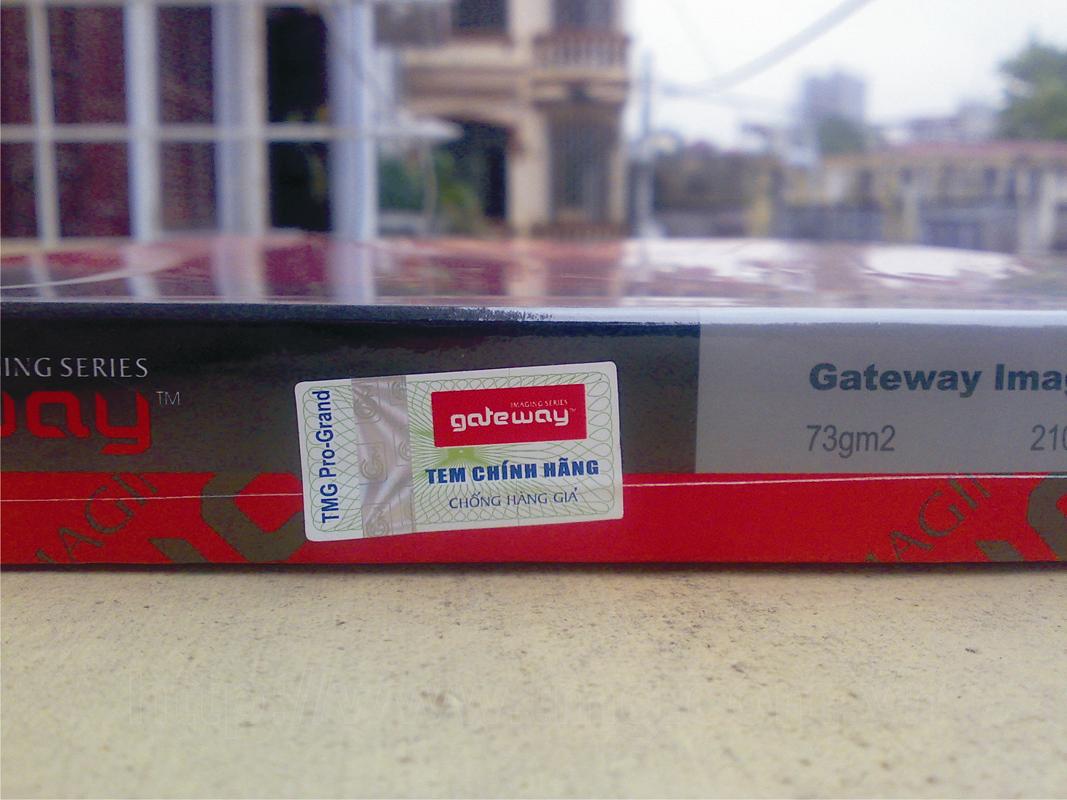 A security hologram label on an electronics box for authentication Counterfeit products are often offered to consumers as being authentic. Counterfeit consumer goods, such as electronics, music, apparel, and counterfeit medications, have been sold as being legitimate. Efforts to control the supply chain and educate consumers help ensure that authentic products are sold and used. Even security printing on packages, labels, and nameplates, however, is subject to counterfeiting.[15] In their anti-counterfeiting technology guide,[16] the EUIPO Observatory on Infringements of Intellectual Property Rights categorizes the main anti-counterfeiting technologies on the market currently into five main categories: electronic, marking, chemical and physical, mechanical, and technologies for digital media.[17] Products or their packaging can include a variable QR Code. A QR Code alone is easy to verify but offers a weak level of authentication as it offers no protection against counterfeits unless scan data is analyzed at the system level to detect anomalies.[18] To increase the security level, the QR Code can be combined with a digital watermark or copy detection pattern that are robust to copy attempts and can be authenticated with a smartphone. A secure key storage device can be used for authentication in consumer electronics, network authentication, license management, supply chain management, etc. Generally, the device to be authenticated needs some sort of wireless or wired digital connection to either a host system or a network. Nonetheless, the component being authenticated need not be electronic in nature as an authentication chip can be mechanically attached and read through a connector to the host e.g. an authenticated ink tank for use with a printer. For products and services that these secure coprocessors can be applied to, they can offer a solution that can be much more difficult to counterfeit than most other options while at the same time being more easily verified.[1] Packaging Packaging and labeling can be engineered to help reduce the risks of counterfeit consumer goods or the theft and resale of products.[19][20] Some package constructions are more difficult to copy and some have pilfer indicating seals. Counterfeit goods, unauthorized sales (diversion), material substitution and tampering can all be reduced with these anti-counterfeiting technologies. Packages may include authentication seals and use security printing to help indicate that the package and contents are not counterfeit; these too are subject to counterfeiting. Packages also can include anti-theft devices, such as dye-packs, RFID tags, or electronic article surveillance[21] tags that can be activated or detected by devices at exit points and require specialized tools to deactivate. Anti-counterfeiting technologies that can be used with packaging include: Taggant fingerprinting – uniquely coded microscopic materials that are verified from a database Encrypted micro-particles – unpredictably placed markings (numbers, layers and colors) not visible to the human eye Holograms – graphics printed on seals, patches, foils or labels and used at the point of sale for visual verification Micro-printing – second-line authentication often used on currencies Serialized barcodes UV printing – marks only visible under UV light Track and trace systems – use codes to link products to the database tracking system Water indicators – become visible when contacted with water DNA tracking – genes embedded onto labels that can be traced Color-shifting ink or film – visible marks that switch colors or texture when tilted Tamper evident seals and tapes – destructible or graphically verifiable at point of sale 2d barcodes – data codes that can be tracked RFID chips NFC chips Information content Literary forgery can involve imitating the style of a famous author. If an original manuscript, typewritten text, or recording is available, then the medium itself (or its packaging – anything from a box to e-mail headers) can help prove or disprove the authenticity of the document. However, text, audio, and video can be copied into new media, possibly leaving only the informational content itself to use in authentication. Various systems have been invented to allow authors to provide a means for readers to reliably authenticate that a given message originated from or was relayed by them. These involve authentication factors like: A difficult-to-reproduce physical artifact, such as a seal, signature, watermark, special stationery, or fingerprint. A shared secret, such as a passphrase, in the content of the message. An electronic signature; public-key infrastructure is often used to cryptographically guarantee that a message has been signed by the holder of a particular private key. The opposite problem is the detection of plagiarism, where information from a different author is passed off as a person's own work. A common technique for proving plagiarism is the discovery of another copy of the same or very similar text, which has different attribution. In some cases, excessively high quality or a style mismatch may raise suspicion of plagiarism. Literacy and literature authentication In literacy, authentication is a readers’ process of questioning the veracity of an aspect of literature and then verifying those questions via research. The fundamental question for authentication of literature is – Does one believe it? Related to that, an authentication project is therefore a reading and writing activity in which students document the relevant research process ([22]). It builds students' critical literacy. The documentation materials for literature go beyond narrative texts and likely include informational texts, primary sources, and multimedia. The process typically involves both internet and hands-on library research. When authenticating historical fiction in particular, readers consider the extent that the major historical events, as well as the culture portrayed (e.g., the language, clothing, food, gender roles), are believable for the period.[3] History and state-of-the-art 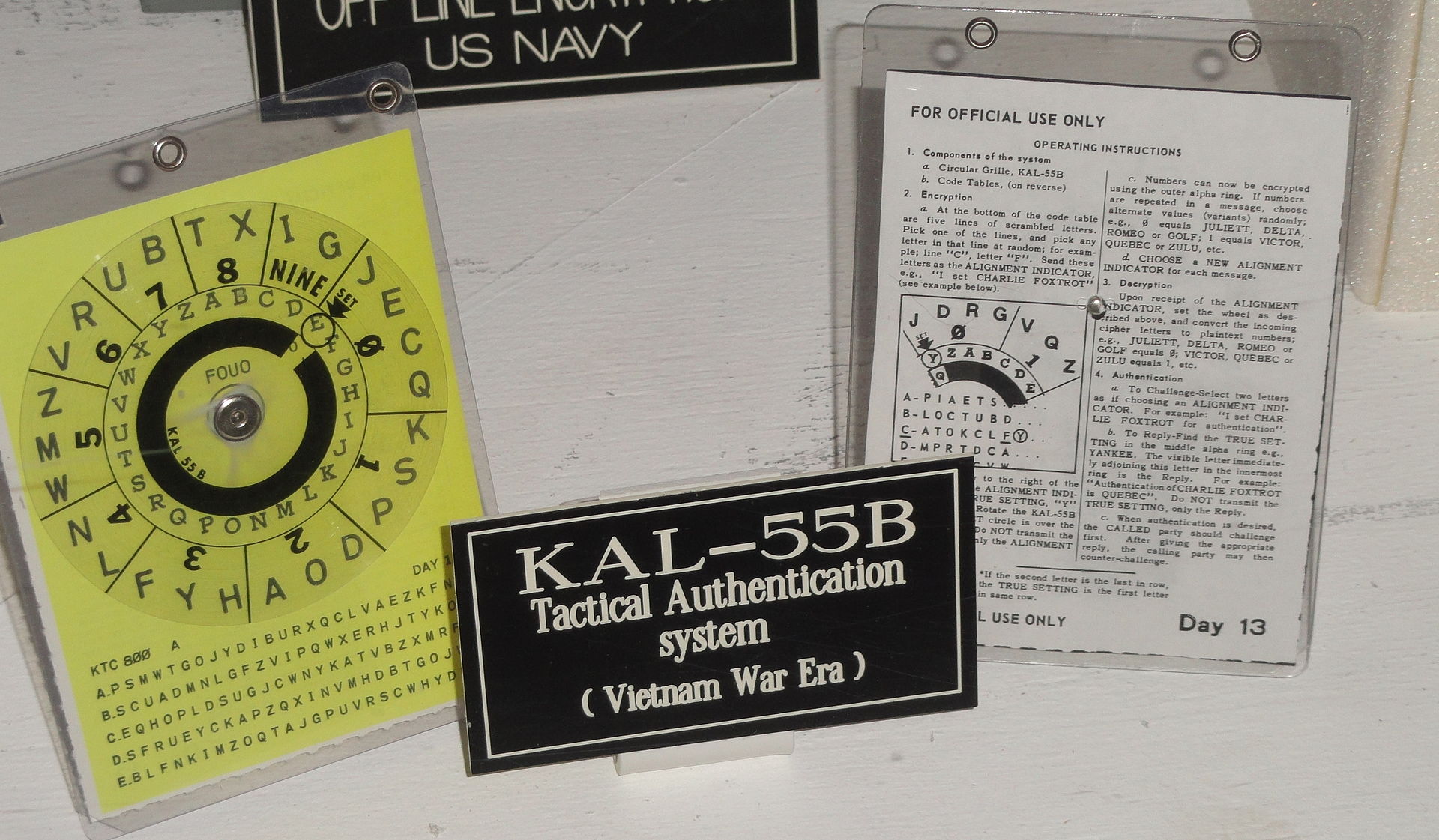 NSA KAL-55B Tactical Authentication System used by the U.S. military during the Vietnam War – National Cryptologic Museum Historically, fingerprints have been used as the most authoritative method of authentication, but court cases in the US and elsewhere have raised fundamental doubts about fingerprint reliability.[23] Outside of the legal system as well, fingerprints are easily spoofable, with British Telecom's top computer security official noting that "few" fingerprint readers have not already been tricked by one spoof or another.[24] Hybrid or two-tiered authentication methods offer a compelling[according to whom?] solution, such as private keys encrypted by fingerprint inside of a USB device. In a computer data context, cryptographic methods have been developed which are not spoofable if the originator's key has not been compromised. That the originator (or anyone other than an attacker) knows (or doesn't know) about a compromise is irrelevant. However, it is not known whether these cryptographically based authentication methods are provably secure, since unanticipated mathematical developments may make them vulnerable to attack in the future. If that were to occur, it may call into question much of the authentication in the past. In particular, a digitally signed contract may be questioned when a new attack on the cryptography underlying the signature is discovered.[citation needed] Authorization  A military police officer checks a driver's identification card before allowing her to enter a military base. The process of authorization is distinct from that of authentication. Whereas authentication is the process of verifying that "you are who you say you are", authorization is the process of verifying that "you are permitted to do what you are trying to do". While authorization often happens immediately after authentication (e.g., when logging into a computer system), this does not mean authorization presupposes authentication: an anonymous agent could be authorized to a limited action set.[25] Access control One familiar use of authentication and authorization is access control. A computer system that is supposed to be used only by those authorized must attempt to detect and exclude the unauthorized. Access to it is therefore usually controlled by insisting on an authentication procedure to establish with some degree of confidence the identity of the user, granting privileges established for that identity. |
オーセンティフィケーション=認証(ギ
リシャ語:αὐθεντικός authentikos、「本物、真正」から、αὐθέντης
authentes、「作者」から)とは、コンピュータシステムのユーザーIDなどの主張を証明する行為である。本人確認とは、人や物の身元を示す行為で
あるのに対し、認証とはその身元を確認するプロセスである[1]。これには、身分証明書の有効性を確認すること、デジタル証明書によるウェブサイトの真正
性を検証すること[2]、炭素年代測定法による人工物の年代測定、製品や文書が偽造品でないことを確認することなどが含まれる。 本人認証を行うATM利用者 方法 メイン記事: Provenance 認証は複数の分野に関連している。美術品、骨董品、人類学では、ある美術品が特定の個人によって、あるいは特定の場所や時代で制作されたものであることを 証明することが共通の課題となっている。 コンピュータサイエンスでは、機密データやシステムへのアクセスを許可するために、ユーザーの身元を確認することがしばしば必要とされる[3]。 認証には 3 種類のタイプがあると考えられる。 認証の最初のタイプは、身元が本物であることを直接知っている信頼できる人物が提示する身元証明を受け入れることである。美術品や物理的な物に対して認証 が必要な場合、その証明は友人、家族、または同僚が、その品物の由来を証明するもので、おそらくその品物が制作者の所有物であったのを目撃したことがある という証言になるだろう。 スポーツ記念品のサイン入り品の場合、その品物にサインがされたのを目撃したという証言が必要になるかもしれない。ブランド品を販売する業者は、その品物 が本物であることを示唆しているが、サプライチェーンの各段階がすべて認証されたという証拠を持っているわけではない。中央集権型の信頼関係は、周知の公 的認証局を通じて最も安全なインターネット通信を保証する。一方、分散型のピア・トゥ・ピア型の信頼関係は、ウェブ・オブ・トラストとも呼ばれ、電子メー ルやファイルなどの個人向けサービスに使用され、例えば、互いに暗号鍵に署名することで信頼関係が確立される。 2つ目の認証方法は、その起源が知られているオブジェクトの属性と、オブジェクト自体の属性を比較するものである。例えば、美術の専門家は絵画のスタイル に類似点があるか、署名の場所や形を確認し、あるいはその品物と古い写真とを比較するかもしれない。 一方、考古学者は炭素年代測定法を用いて人工物の年代を検証し、使用された材料の化学的および分光分析を行い、あるいは建築様式や装飾を同様の起源を持つ 他の人工物と比較するかもしれない。音や光の物理学、既知の物理的環境との比較は、音声記録、写真、ビデオの真正性を検証するために利用することができ る。文書は、その物品が作成されたと推定される当時に容易に手に入るインクや紙で作成されたものであることを確認することができる。 属性比較は偽造に弱い場合がある。一般的に、本物と見分けがつかない偽物を作るには専門知識が必要であること、ミスを犯しやすいこと、偽物を作るために必 要な労力は偽物から得られる利益よりもはるかに大きいという事実に基づいている。 美術品や骨董品では、証明書は関心のある価値のある品物の真正性を証明するために非常に重要である。しかし、証明書も偽造される可能性があり、その真正性 の証明が問題となる。例えば、有名な美術品偽造犯ハン・ファン・ミーゲレンの息子は、父親の作品を偽造し、その作品の来歴を示す証明書も偽造した。 詐欺、偽造、偽造品に対する刑事罰や民事罰は、摘発されるリスクに応じて偽造の誘因を減らすことができる。 通貨やその他の金融商品は一般的にこの2番目のタイプの認証方法を使用している。紙幣、硬貨、小切手には、細かい印刷や刻印、独特な手触り、透かし、ホロ グラムなど、訓練を受けた受け手が簡単に確認できる、複製が難しい物理的特徴が組み込まれている。 3つ目の認証方法は、文書やその他の外部からの確認に依存している。 刑事裁判では、証拠のルールにより、提出された証拠の保管記録の確立が求められることが多い。これは、証拠の保管記録を文書化すること、またはそれを扱っ た警察の刑事や鑑識スタッフの証言によって達成できる。一部の骨董品には、その真正性を証明する証明書が付属している。署名入りのスポーツ記念品には、通 常、真正性を証明する証明書が付属している。これらの外部記録には、偽造や偽証の問題があり、また、その品物から切り離されて紛失する恐れもある。 コンピュータサイエンスでは、ユーザーの認証情報に基づいて、ユーザーに安全なシステムへのアクセスを許可することができる[4]。ネットワーク管理者 は、ユーザーにパスワードを付与したり、システムへのアクセスを可能にするキーカードやその他のアクセスデバイスを提供したりすることができる。この場 合、認証は暗示されるが保証されるわけではない。 医薬品、香水、衣類などの消費財は、偽造品が人気のブランドの評判を利用することを防ぐために、あらゆる形式の認証を使用することができる。前述の通り、 評判の良い店で販売されている商品には、それが本物であるという暗黙の保証がある。これが認証の第一種である。第二種の認証には、高価なハンドバッグなど の商品の品質や職人技を本物の商品と比較することが含まれるかもしれない。第三種の認証には、法的に保護されたマークである商品の商標や、消費者が本物の ブランド商品を識別するのを助けるその他の識別機能がある。ソフトウェアでは、ホログラム、セキュリティリング、セキュリティスレッド、カラーシフトイン クを追加するなど、偽造品から保護するための大きな一歩が踏み出されている[5]。 認証要素 認証の方法は、認証要素として知られる次の 3 つのカテゴリーに分類される。すなわち、ユーザーが知っていること、ユーザーが所有していること、そしてユーザー自身であることである。各認証要素は、ア クセス許可、取引リクエストの承認、文書やその他の成果物の署名、他者への権限付与、権限の連鎖確立の前に、個人の身元を認証または確認するために使用さ れる要素の範囲をカバーする。 セキュリティ研究により、確実な認証を行うためには、少なくとも 2 つ、できれば 3 つの要素をすべて検証すべきであることが判明している[6]。3 つの要素(クラス)と各要素に含まれる要素の一部は以下のとおりである。 知識:ユーザーが知っているもの(例:パスワード、パスワードの一部、パスフレーズ、個人識別番号(PIN)、チャレンジ・レスポンス(ユーザーは質問や パターンに答えなければならない)、セキュリティ質問)。 所有: ユーザーが所有するもの(リストバンド、IDカード、セキュリティトークン、埋め込み型デバイス、ハードウェアトークン内蔵の携帯電話、ソフトウェアトー クン、またはソフトウェアトークンを搭載した携帯電話など)。 内在性:ユーザーが持つもの、または行うもの(指紋、網膜パターン、DNA配列(十分な条件についてはさまざまな定義がある)、署名、顔、声、固有の生体 電気信号、またはその他の生体認証識別子など)。 単一要素認証 認証の最も弱いレベルとして、3つの要素のカテゴリーのうちの1つから1つの要素のみを使用して個人の身元を認証する。 1つの要素のみを使用すると、悪用や悪意のある侵入に対する保護が十分ではない。 このタイプの認証は、より高いレベルのセキュリティが求められる金融取引や個人情報に関連する取引には推奨されない[2]。 多要素認証 メイン記事: 多要素認証 多要素認証は、2つ以上の認証要素(自分が知っていること、自分が持っていること、自分が何者か)を必要とする。2要素認証は、まさに2つの要素を必要と する多要素認証の特別なケースである[2]。 例えば、銀行カード(ユーザーが持っているもの)と暗証番号(ユーザーが知っているもの)の組み合わせは、2要素認証となる。ビジネスネットワークでは、 ユーザーにパスワード(知識要素)とセキュリティトークンから生成された疑似乱数(所有要素)を入力させる場合がある。非常に高度なセキュリティシステム へのアクセスには、身長、体重、顔、指紋のチェック(複数の内在要素)に加え、PINと日コード(知識要素)の入力が必要な場合もあるが、これは依然とし て2要素認証である。 認証の種類 強固な認証 米国政府の「国家情報保証用語集」では、強固な認証とは、情報の発信者または受信者の身元を確認するために、2つ以上の認証要素に依存する多層的な認証ア プローチであると定義されている[7]。 欧州中央銀行(ECB)は、強固な認証を「3つの認証要素のうち2つ以上に基づく手続き」と定義している。使用される要素は相互に独立していなければなら ず、少なくとも 1 つの要素は「再利用不可かつ複製不可」でなければならない。ただし、内在要素の場合はこの限りではなく、またインターネット上で盗まれる可能性がないもの でなければならない。欧州と米国における理解では、強固な認証は多要素認証や2FAと非常に類似しているが、より厳格な要件によりそれらを上回っている [2][8]。 FIDOアライアンスは強固な認証の技術仕様を確立するために努力している[9]。 継続的な認証 従来のコンピュータシステムは、最初のログインセッションでのみユーザーを認証するため、重大なセキュリティ上の欠陥の原因となる可能性がある。この問題 を解決するには、ユーザーの生体認証情報を継続的に監視し、認証を行う方法が必要である。ある研究では、筆跡に基づく行動バイオメトリクスを連続認証方法 として使用した[10][11]。 最近の研究では、スマートフォンのセンサーやアクセサリーを使用して、タッチのダイナミクス、キーストロークのダイナミクス、歩行認識などの行動属性を抽 出できる可能性を示している[12]。これらの属性は行動バイオメトリクスとして知られており、スマートフォン上で暗黙的かつ継続的にユーザーを認証また は識別するために使用することができる。これらの行動バイオメトリクス特性に基づいて構築された認証システムは、アクティブ認証システムまたは継続認証シ ステムとして知られている[13][11]。 デジタル認証 デジタル認証は、電子認証または電子認証とも呼ばれ、ユーザーIDの信頼性を確立し、電子的方法で情報システムに提示する一連のプロセスを指す。デジタル 認証プロセスは、ネットワーク経由で個人またはエンティティをリモートで認証する必要があるため、技術的な課題が生じる。米国国立標準技術研究所 (NIST)は、安全な認証を達成するために使用されるプロセスを説明するデジタル認証の汎用モデルを作成した。 登録 – 個人がクレデンシャルサービスプロバイダー(CSP)に登録プロセスを開始するよう申請する。申請者の身元確認に成功した後、CSPは申請者を加入者に認 める。 認証 – 加入者となった後、ユーザーは認証トークンやユーザー名などの認証情報を受け取る。そして、信頼する相手との認証セッション内でオンライン取引を行うこと が許可されるが、その際、1つ以上の認証子を持っていることを証明しなければならない。 ライフサイクル管理 - CSP は、ユーザーの認証情報の有効期間中は、その認証情報の管理を行う責任を負う。一方、加入者は、自身が使用する認証情報の管理責任を負う。 情報の認証 電子通信では、第三者による通信傍受(マン・イン・ザ・ミドル攻撃)に脆弱であるという特別な問題が生じる可能性がある。これは、第三者が通信ストリーム に介入し、他の通信当事者のふりをして、それぞれの当事者からの情報を傍受するというものである。各当事者の身元を認証するために、追加の身元確認要素が 必要になる場合がある。 製品の認証  電子機器の箱に貼られた、認証用のセキュリティホログラムラベル 偽造品は、本物として消費者に提供されることが多い。 電子機器、音楽、アパレル、偽造医薬品などの偽造消費財が、正規品として販売されている。 サプライチェーンを管理し、消費者を教育する取り組みは、正規品が販売され使用されることを保証するのに役立つ。しかし、パッケージ、ラベル、銘板に施さ れたセキュリティ印刷でさえも、偽造の対象となる可能性がある[15]。 EUIPO知的財産権侵害監視局が発行した偽造防止技術ガイド[16]では、現在市場に出回っている主な偽造防止技術を、電子的、マーキング、化学的・物 理的、機械的、デジタルメディア用技術の5つのカテゴリーに分類している[17]。 製品またはそのパッケージには、可変QRコードを含めることができる。QRコードは検証が容易であるが、スキャンデータをシステムレベルで分析して異常を 検出しない限り、偽造品に対する保護機能がないため、認証レベルは低い[18]。セキュリティレベルを高めるために、QRコードは、コピーの試みに対して 強固で、スマートフォンで認証できるデジタル透かしやコピー検出パターンと組み合わせることができる。 家電製品、ネットワーク認証、ライセンス管理、サプライチェーン管理などの認証には、安全なキーストレージデバイスを使用できる。一般的に、認証されるデ バイスは、ホストシステムまたはネットワークのいずれかに、無線または有線による何らかのデジタル接続を必要とする。しかし、認証されるコンポーネントは 必ずしも電子的である必要はなく、認証チップを機械的に取り付け、ホストへのコネクタを介して読み取ることができる。例えば、プリンタで使用される認証済 みインクタンクなどである。これらのセキュアコプロセッサを適用できる製品やサービスの場合、偽造が非常に困難なソリューションを提供できると同時に、検 証も容易になる[1]。 パッケージ パッケージングやラベルは、偽造消費財のリスクや製品の盗難・転売のリスクを軽減するために設計することができる[19][20]。一部のパッケージ構造 はコピーが困難であり、また、盗品を示すシールが貼られているものもある。偽造品、不正販売(横流し)、原材料のすり替え、改ざんなどは、こうした偽造防 止技術によりすべて減らすことができる。パッケージには、パッケージと中身が偽造品ではないことを示すために、認証シールやセキュリティ印刷を使用する場 合がある。また、パッケージには、染料パック、RFIDタグ、電子式商品監視タグ[21]などの盗難防止装置を取り付けることもでき、これらは出口に設置 された装置で作動または検知され、解除には特殊な工具を必要とする。パッケージングに使用できる偽造防止技術には、次のようなものがある。 タグアントフィンガープリンティング - データベースから照合される、一意にコード化された微細な材料 暗号化マイクロ粒子 - 人間の目には見えない予測不可能なマーキング(数字、層、色) ホログラム - シール、パッチ、箔、ラベルに印刷されたグラフィックで、販売時に目視確認に使用 マイクロプリンティング - 通貨に多く使用される二次認証 シリアル化されたバーコード UV印刷 - UVライトの下でのみ見えるマーク 追跡システム - 商品をデータベースの追跡システムにリンクするコード 水インジケーター – 水に触れると目に見えるようになる DNA追跡 – 追跡可能な遺伝子がラベルに埋め込まれている 色が変わるインクまたはフィルム – 傾けると色や質感が変わる目に見えるマーク 開封防止シールおよびテープ – 販売時点で破壊可能または目視で確認可能 2次元バーコード – 追跡可能なデータコード RFIDチップ NFCチップ 情報コンテンツ 文学の偽造には、著名な作家のスタイルを模倣することが含まれる。オリジナル原稿、タイプライターで打ったテキスト、録音などが残っている場合、その媒体 自体(またはそのパッケージング、つまり箱からメールのヘッダーまで)が文書の真正性を証明または反証するのに役立つ。しかし、テキスト、音声、ビデオは 新しいメディアにコピーできるため、認証に使用できるのは情報内容だけになってしまう可能性がある。著者が、特定のメッセージが自身によって発信されたも のである、あるいは自身によって中継されたものであることを、読者が確実に認証するための手段を提供できるようにするために、さまざまなシステムが考案さ れてきた。これには次のような認証要素が含まれる。 複製が困難な物理的証拠、例えば、印章、署名、透かし、特殊な便箋、指紋など。 メッセージの内容に含まれる合言葉などの共有秘密。 電子署名。公開鍵基盤は、特定の秘密鍵の所有者が署名したメッセージであることを暗号技術で保証するために使用されることが多い。 これとは逆の問題として、盗作の検出がある。盗作とは、他人の著作物をあたかも自分の著作であるかのように発表することである。盗作を証明する一般的な手 法として、同じまたは非常に類似した文章の別のコピーを発見し、その出典が異なることを示すという方法がある。場合によっては、品質が極端に高い場合や文 体があまりにも異なっている場合、盗作の疑いがかかることもある。 識字能力と文学作品の真贋判定 識字能力において、真贋判定とは、文学作品の特定の側面について読者がその真実性を疑うプロセスであり、その後、調査を通じてその疑いを検証するものであ る。文学作品の真贋を確かめる上で最も重要なのは、「それを信じるかどうか」である。これに関連して、真贋判定プロジェクトは、学生たちが関連する研究プ ロセスを記録する読み書き活動であると言える([22])。このプロジェクトは、学生の批判的リテラシーを育む。文学作品の記録資料は、物語的なテキスト にとどまらず、情報テキスト、一次資料、マルチメディアなども含まれる。このプロセスには、通常、インターネットと図書館での調査の両方が含まれる。特に 歴史小説を認証する場合、読者は、主要な歴史的出来事や描写された文化(言語、服装、食べ物、性別役割など)がその時代において信憑性がある程度あるかど うかを考慮する[3]。 歴史と最新技術  ベトナム戦争中に米軍が使用したNSA KAL-55B戦術認証システム - 国立暗号博物館 歴史的に、指紋は最も信頼性の高い認証方法として使用されてきた しかし、米国やその他の国々で起きた裁判により、指紋の信頼性に対する根本的な疑問が浮上している[23]。法制度の外でも、指紋は簡単に偽装できる。ブ リティッシュ・テレコムの最高コンピューターセキュリティ責任者は、「偽装された指紋によって騙されていない指紋認証リーダーは『ほとんどない』」と指摘 している[24]。ハイブリッド認証や二段階認証は、USBデバイス内の指紋で暗号化された秘密鍵など、説得力のある[誰によるとか?]ソリューションを 提供している。 コンピュータデータにおいては、発信者の鍵が漏洩していない限り、偽造不可能な暗号方法が開発されている。発信者(または攻撃者以外の者)が漏洩について 知っているか知らないかは問題ではない。しかし、これらの暗号認証方法が証明可能なほど安全であるかどうかは不明である。なぜなら、予期せぬ数学的発展に より、将来攻撃に脆弱になる可能性があるためである。もしそのようなことが起こると、過去の認証の多くに疑問が投げかけられることになるかもしれない。特 に、署名に用いられている暗号に対する新たな攻撃が発見された場合、デジタル署名された契約が疑われる可能性がある[出典が必要]。 承認  軍警察官が運転手の身分証明書をチェックし、軍基地への入りを許可する。 承認のプロセスは認証のプロセスとは異なる。認証とは「あなたが言う通りの人物である」ことを確認するプロセスであるのに対し、認可とは「あなたがしよう としていることを行うことが許可されている」ことを確認するプロセスである。認可は多くの場合、認証の直後に行われる(例えば、コンピュータシステムへの ログイン時など)が、これは認可が認証を前提としていることを意味するわけではない。 アクセス制御 認証と認可のよく知られた用途の1つはアクセス制御である。権限を持つユーザーのみが使用するべきコンピュータシステムは、権限を持たないユーザーを検知 し排除しようとする。そのため、通常、ユーザーIDをある程度確実に確認し、そのIDに対して設定された権限を付与する認証手順を義務付けることで、アク セスが制御される。 |
| Authentication protocol |
認証プロトコル |
| https://en.wikipedia.org/wiki/Authentication |
|
| Authenticity in art is manifest
in the different ways that a work of art, or an artistic performance,
can be considered authentic.[1] The initial distinction is between
nominal authenticity and expressive authenticity. In the first sense,
nominal authenticity is the correct identification of the author of a
work of art; of how closely an actor or an actress interprets a role in
a stageplay as written by the playwright; of how well a musician's
performance of an artistic composition corresponds to the composer's
intention; and how closely an objet d’art conforms to the artistic
traditions of its genre. In the second sense, expressive authenticity
is how much the work of art possesses inherent authority of and about
its subject, and how much of the artist's intent is in the work of
art.[2] For the spectator, the listener, and the viewer, the authenticity of experience is an emotion impossible to recapture beyond the first encounter with the work of art in its original setting. In the cases of sculpture and of painting, the contemporary visitor to a museum encounters the work of art displayed in a simulacrum of the original setting for which the artist created the art. To that end, the museum visitor will see a curated presentation of the work of art as an objet d’art, and might not perceive the aesthetic experience inherent to observing the work of art in its original setting — the intent of the artist.[3] Artistic authenticity is a requirement for the inscription of an artwork to the World Heritage List of the Educational, Scientific, and Cultural Organisation of the United Nations (UNESCO);[4] the Nara Document on Authenticity (1994) stipulates that artistic authenticity can be expressed through the form and design; the materials and substance; the use and function; the traditions and techniques; the location and setting; and the spirit and feeling of the given work of art.[5][6] Nominal authenticity Provenance 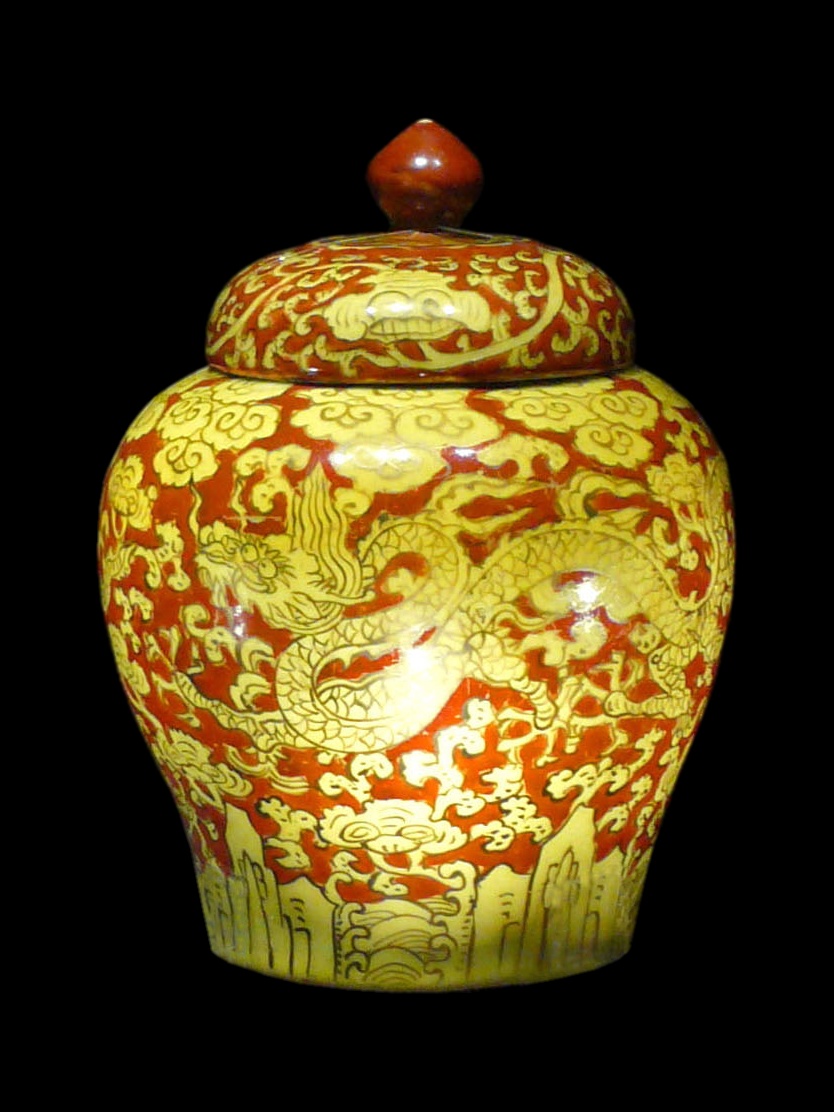 Authenticity of provenance: The Yellow Dragon jar from the Jiajing period (1521–1567) of the Ming dynasty (1368–1644); a practical item in the 16th-century, and an objet d’art in the 21st century. The authenticity of provenance of an objet d’art is the positive identification of the artist and the place and time of the artwork's origin;[7] thus, art experts determine authenticity of provenance with four tests: (i) verification of the artist's signature on the work of art; (ii) a review of the historical documentation attesting to the history of the artefact; (iii) scientific evidence (x-rays of the canvas, infrared spectroscopy of the paint, dendrochronological analysis of the wood); and (iv) the expert judgement of a connoisseur with a trained eye.[8] In Sincerity and Authenticity (1972), the literary critic Lionel Trilling said that the question of authenticity of provenance had acquired a profoundly moral dimension, that regardless of the physical condition and appearance, the quality of workmanship of an artwork, it is greatly important to know whether or not a Ming vase is authentic or a clever art forgery.[9] The preoccupation with the authenticity of provenance of an artwork is historically recent, and particular to Western materialism; in the Eastern world, it is the work of art, itself, which is important; the artist's identity and the provenance of the artwork are secondary considerations.[10] Art forgery  The art of forgery: The Supper at Emmaus (1937), by Han van Meegeren, a Dutch master forger who deceived the Reichsmarschall H. Göring that the painting was a genuine Vermeer painting. Consequent to a critically truncated career, the painter Han van Meegeren (1889–1947) earned his living as an art forger, by specifically producing fake paintings by 17th-century artists, such as Frans Hals (1582–1666) and Pieter de Hooch (1629–1684), Gerard ter Borch (1617–1681) and Johannes Vermeer (1632–1675). Van Meegeren produced masterly paintings that deceived critics and art experts, who then accepted and acclaimed the forgeries as genuine masterpieces, especially the Supper at Emmaus (1937) painting accepted as a real Vermeer by experts, such as Abraham Bredius. In the event, to survive the Second World War (1939–1945), van Meegeren dealt forgeries to the Nazi occupiers of the Netherlands (1940–1945). In the post–War reckoning among the nation, the Dutch authorities arrested van Meegeren as a Nazi collaborator who had sold national treasures to the German enemy. To avoid a traitor's death, the painter van Meegeren demonstrated his technical skills as a forger of paintings by the Old Masters, to prove he sold forged paintings to the Nazis.[11] To guard against unwittingly buying a forged work of art, sellers and buyers use a certificate of authenticity as documentary proof that an artwork is the genuine creation of the artist identified as the author of the work — yet there is much business in counterfeit certificates of authenticity, which determines the monetary value of a work of art.[12] The inauthenticity of forged painting is discovered with documentary evidence from art history and with forensic evidence gleaned from the techniques of art conservation,[13] such as chronological dating, to establish the authenticity of provenance of paintings by the Old Masters.[14][15] The potential monetary value represented by a certificate of authenticity can prejudice collectors and art dealers to buy recent-period artworks with determined provenance, sometimes established by the artist.[16] Forgery as art Critical interest in a forgery as a work of art is rare;[17] yet, in the essay “The Perfect Fake” (1961), the critic of architecture and art Aline B. Saarinen asked what “If a fake is so expert, that even after the most thorough and trustworthy examination, its authenticity is still open to doubt, is it or is it not as satisfactory a work of art as if it were unequivocally genuine?”[18] In The Act of Creation (1964), Arthur Koestler concurred with Saarinen's proposition of “forgery as an art”, and said that if a forgery fits into the body of work of an artist, and if the forgery produces the same aesthetic pleasure as the authentic artworks, then the forged art should be included to exhibitions of the works of the plagiarised artist.[19] In the art business, the artistic value of a well-executed forgery is irrelevant to a curator concerned with the authenticity of provenance of the original work of art[20] — especially because formally establishing the provenance of a work of art is a question of possibility and probability, rarely of certainty, unless the artist vouches for the authenticity of the art.[21] Nevertheless, to the arts community, a forgery remains a forgery, regardless of the excellent artistic execution of the forgery, itself; regardless of the artistic talent of the forger; and regardless of critical praise when critics and public believed the forgery was authentic art.[17] Mechanical reproduction  Mechanical reproduction of art: Facsimile of a 1611 woodcut of the Renaissance French composer Josquin des Prez (1450–1521) copied from an oil painting, the authentic work of art.[22] Relief printing is a form of mechanical reproduction of art; thus (i) an artist created a drawing; (ii) a craftsman used the drawing to create a woodcut block for relief-printing, usually destroying the original artwork when cutting the drawing into the block of wood; and (iii) the woodblock, itself, was discarded when worn-out for relief printing copies of the drawing. From that three-step process for the production of art, the printed copies of the original drawing are the final product of artistic creation, yet there exists no authentic work of art; the artistic copies have no authenticity of provenance.[23] In the essay “The Work of Art in the Age of Mechanical Reproduction” (1935), Walter Benjamin discussed the then-new visual media of photography and cinematography as machines capable of producing art that can be reproduced many times — yet no one version of the image is the original, artistically authentic image. As visual media that reproduce — but do not create — original images, photography and the cinema shift the concept of artistic authenticity from “art as ritual” to “art as politics” and so make works of art accessible to the mass population, rather than just the aficionado.[24] A contemporary extension of Benjamin's observations is the perpetual authenticity of the sculpture Sunbather (1971), by the artist Duane Hanson (1925–1996), who gave permission to the conservators of the life-sized sculpture (a woman sunbathing whilst reclining in a chaise longue) to replace parts of the sculpture (cap, swimming suit, towel, etc.) that became faded and worn.[25] Likewise, in light of the artistic production and mechanical reproduction capabilities of computers and the internet, the media artist Julian H. Scaff said that the authenticity of provenance of a digital image (painting, still photograph, cinema frame) cannot be determined, because a digital work of art usually exists in more than one version, and each version is not created, but authored by a different digital artist with a different perspective of what is art.[26] Authenticity of experience 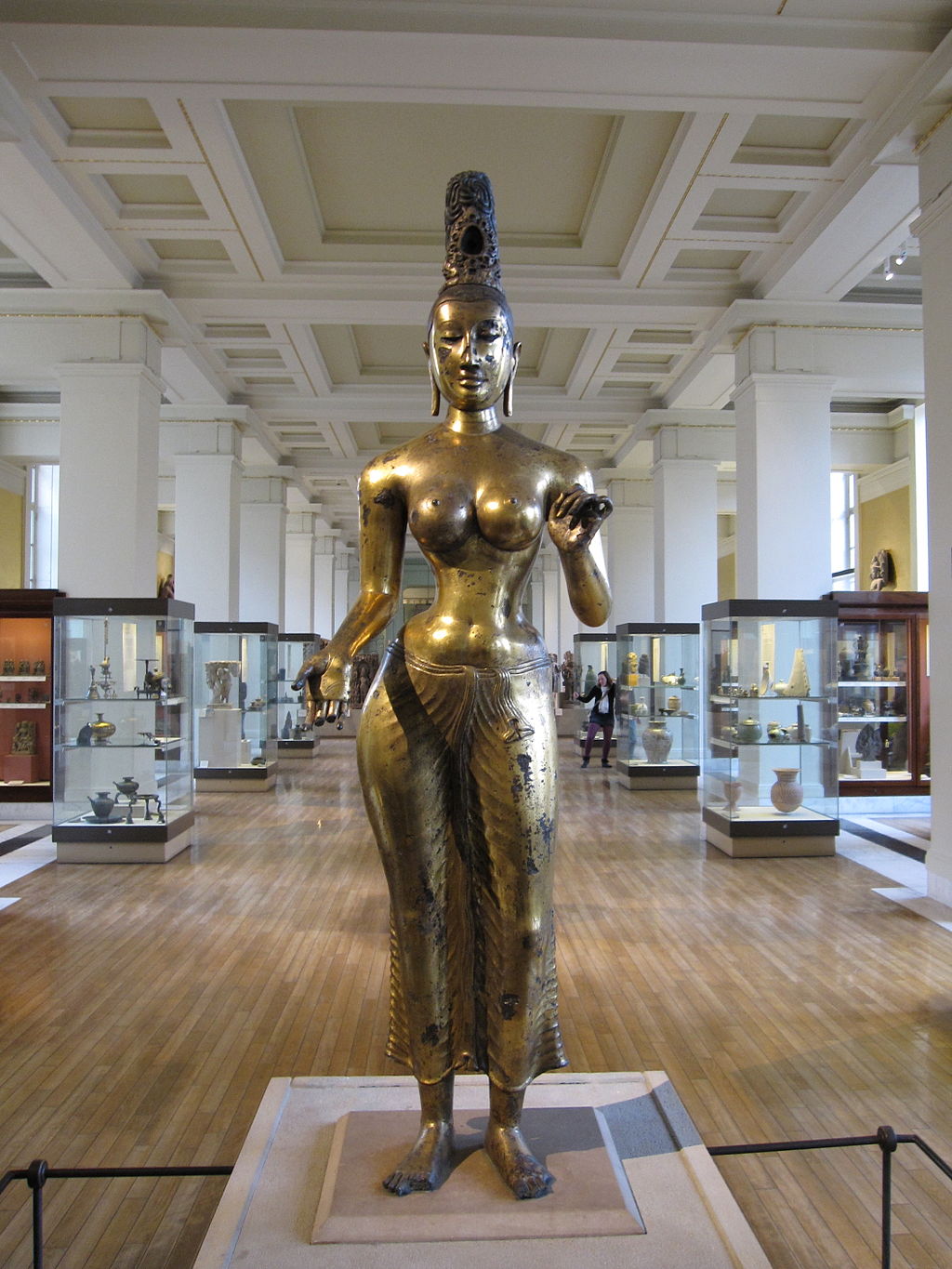 The authenticity of experience of a work of art is ephemeral; thus, beholding the statue of the Hindu goddess Tara (Sri Lanka, 8th c.) in a secular setting (a museum) is unlike the aesthetic experience of beholding the statue-as-goddess in the original setting (a temple). Authenticity of experience is available only to the spectator who experiences a work of art in the original setting for which the artist created the artefact. In another setting, the authenticity of experience (purpose, time, place) is impossible; thus, in the Western world, the museum display is an approximation (literal, metaphoric) of the original setting for the which the artist created the work of art. Isolated exhibition in a museum diminishes the aesthetic experience of a work of art, although the spectator will see the work of art. Lacking the original context (place, time, purpose ) limits aesthetic appreciation than experience of the work of art in the original setting — where the art and the setting are the aesthetic intent of the artist. Recognizing that authenticity of experience is unique and cannot be recaptured, the curator of a museum presents works of art in literal and metaphoric displays that approximate the original settings for which the artists created the artworks. Realised with artifice and lighting, the museum displays provide the spectator a sensory experience of the works of art.[3] In that commercial vein, the tour business sells “the experience of art” as a facsimile of the authenticity of experience of art. The tourist consumes “Culture” by attending an opera at La Scala, an 18th-century opera house at Milano. The natural audience, informed opera aficionados, lose interest and cease attending regularly, but the opera house is a business, and continues presenting performances for aficionados of culture and for tourists with, perhaps, an understanding of the opera — the art being experienced. Likewise, to earn a living as artists, Pacific Islander dancers present their "Pacific Islander culture" as entertainment for and edification of tourists. Although the performances of Pacific-islander native culture might be nominally authentic art, in the sense of being true to the original culture, the authenticity of experience of the art is questionable.[2] Cultural authenticity 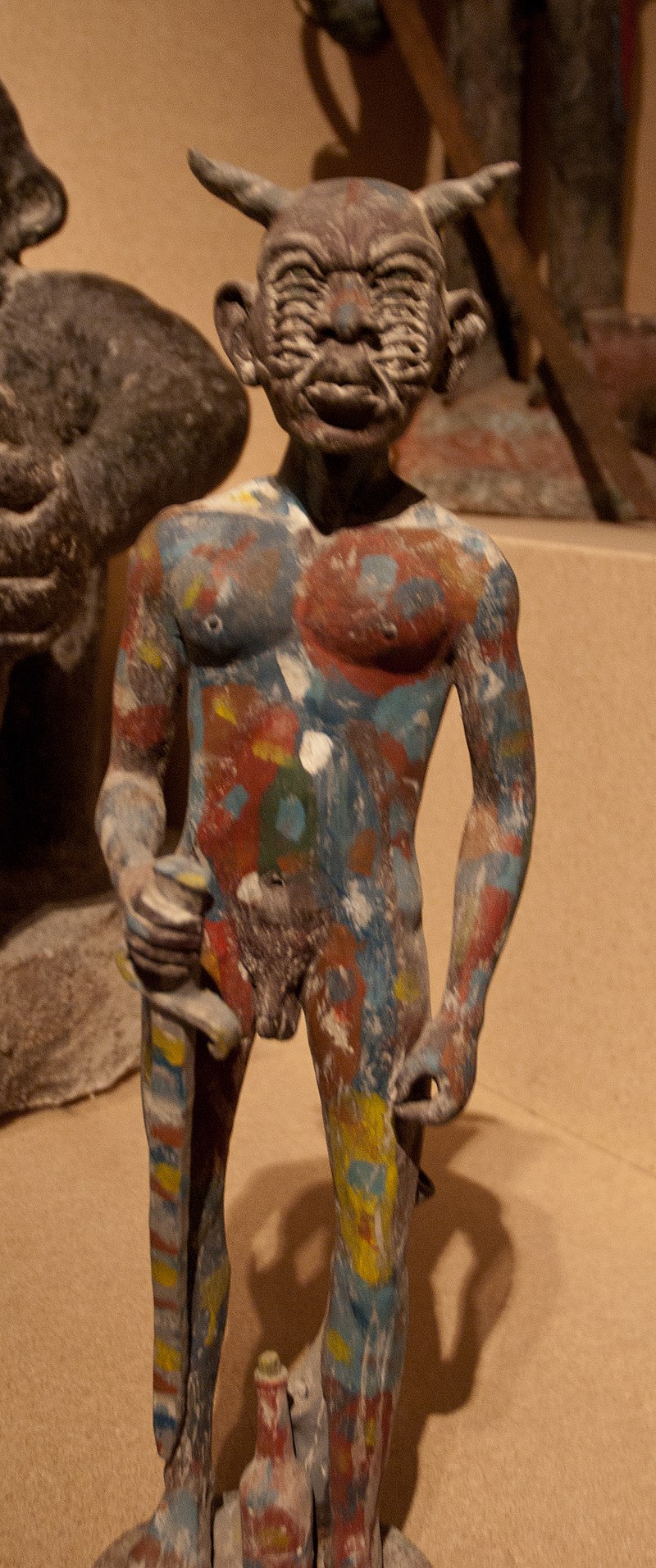 Cultural authenticity: A Haitian Vodou fetish statue of a devil with twelve eyes. 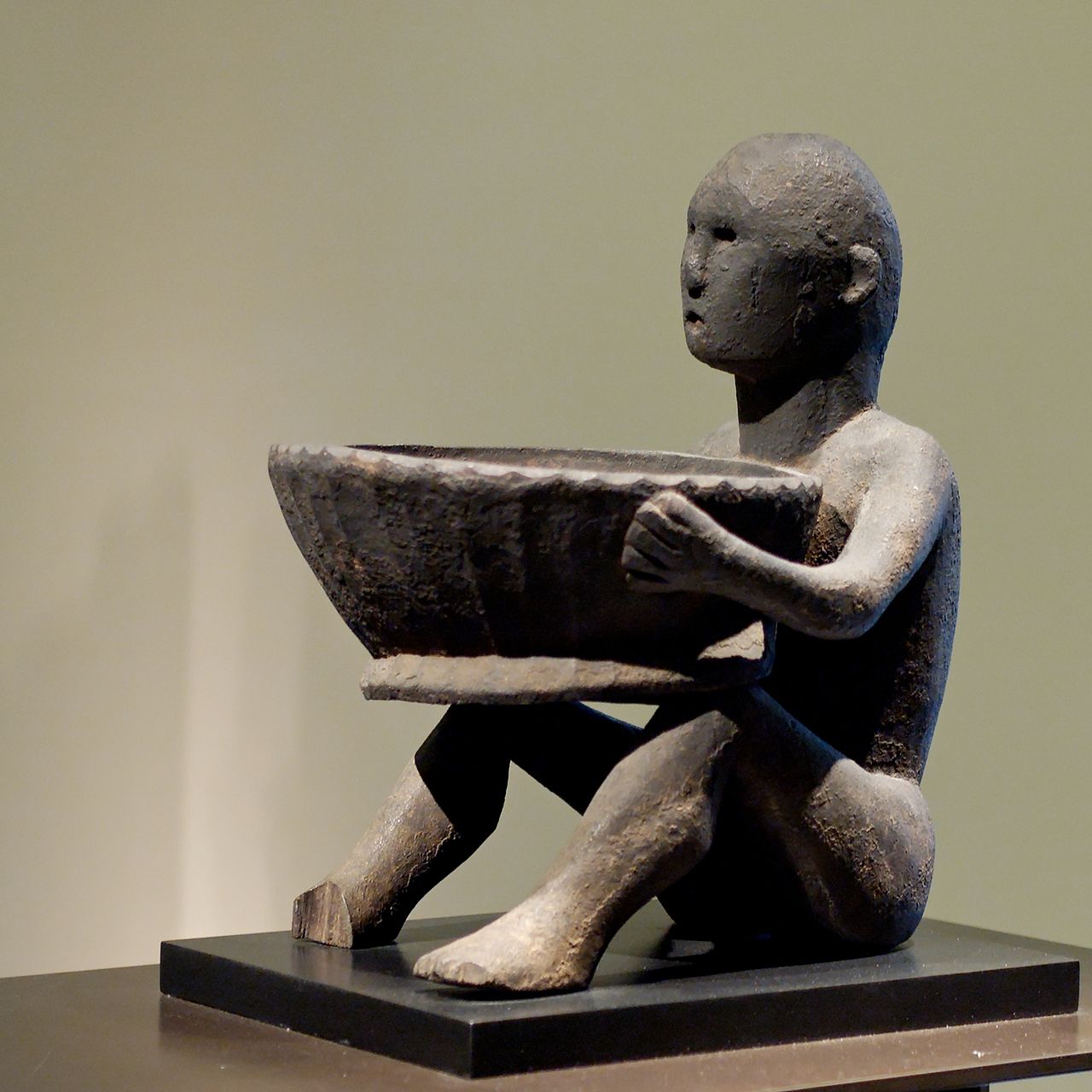 Cultural authenticity: A carved-wood bulul is a stylized representation of an ancestor that gains power from the presence of an ancestral spirit. Dating from the 15th century, bulul figurines guarded the community's rice crop, feature in traditional ceremonies, and are souvenirs sold to tourists to the Philippine Islands. The authenticity of provenance establishes the material existence of the work of art; the identity of the artist; and when and where the artist created the work of art. Cultural authenticity — genre and artistic style — concerns whether or not a work of art is a genuine expression of artistic tradition. Concern with the cultural authenticity of a work of art usually originates from romanticism about the greater artistic value of artefacts created in “the pure tradition” of the genre; such an idealistic perspective usually derives from nationalism and racism and tribalism, and misunderstandings of aesthetics.[27] A work of art is authentic when executed in the style, with the materials, and by the production process that are essential attributes of the genre. Cultural authenticity derives from the artistic traditions created by the artists of the ethnic group. A genre artwork is authentic only if created by an artist from the ethnic group; therefore, only the Inuit can create authentic Inuit art. The philosophic and sociologic perspective of the authenticity of expression is what protects artists from the art thefts inherent and consequent to cultural appropriation; nonetheless, in the essay “Race, Ethnicity, Expressive Authenticity: Can White People Sing the Blues?” Joel Rudinow disagreed and defended cultural appropriation, and said that such protectiveness of cultural authenticity is a form of racism.[28] The art business In the West, the market for “primitive art” arose and developed at the end of the 19th century, consequent to European explorers and colonialists meeting and trading with the cultural and ethnic groups of Africa, Asia, and Oceania. Artistically, the native peoples who dealt with the explorers and colonists quickly incorporated to their production of art new materials from Europe, such as cloth and glass beads. Yet European collectors and art dealers would not buy “inauthentic”, mixed-media primitive art made with native and European materials. To overcome resistance to inauthentic primitive art, the art dealers produced artefacts, made with local materials, which Westerners would accept and buy as authentic native art.[29] The 19th-century business model of artistic production remains the contemporary practise in selling authentic objets d’art to Western collectors and aficionados. Usually, the artefacts are designed and modified to give the impression of possessing popular attributes and authentic provenance, such as religious-ritual use, antiquity, and association with aristocracy and royalty.[30] In the 20th century, during the 1940s, Haitian artists created commercial reproductions of “voodoo images” provided to them by foreign businessmen, to sell as “authentic voodoo art.” To the Haitian artists, the foreign representations of Haitian artistic culture, which they were paid to make, demonstrated the art-theft inherent to cultural appropriation and how White foreigners truly saw Haitian Vodou art as a commercial commodity, and not as religious art.[31] Deities and souvenirs To distinguish a work of art from a crude artefact made for tourists, art collectors consider an artwork to be artistically authentic when it meets recognised standards of artistic production (design, materials, manufacture) for an original purpose. In the Philippine Islands, throughout their history, the Igorot people have used carved-wood bulul figurines to guard the rice crop; the bulul is a highly stylized representation of an ancestor that gains power from the presence of an ancestral spirit.[32] Although still used in traditional ceremonies, the Igorot people now produce souvenir bulul figurines for tourists; a secondary purpose that does not devalue the bulul as art. Within the culture, an Igorot family might use a souvenir bulul as suitable and acceptable for traditional ceremonies — thereby granting the souvenir bulul an artistic and cultural authenticity otherwise absent.[2] From that perspective, “tribal masks and sculptures” actually used in religious ceremonies have greater commodity value, especially if authenticity of provenance determines that a native artist created the artefact by using traditional designs, materials, and production techniques. Such Western over-valuation of native art is predicated by the artefact being an authentic example of a tradition or style of art practised by a primitive people.[33] Invented traditions The artistic evolution of the Maroon people of French Guiana, shows that contemporary artistic styles developed through the interaction of art and commerce, between artists and art businessmen. The long history and strong traditions of Maroon art are notable in the forms of decoration of everyday objects, such as boat paddles and window shutters, art of entirely aesthetic purpose. To sell Maroon artworks, European art collectors assigned symbolism to the “native art” they sold in the art markets, to collectors, and to museums; a specific provenance. Despite the mutual miscommunication betwixt artists and businessmen about the purpose, value, and price of works of art, Maroon artists used the European semiotic language to assign symbolic meanings to their works of native art, and make a living; yet young Maroon artists might mistakenly believe that the (commercial) symbolism derives from ancestral traditions, rather than from the art business.[34] Expressive authenticity Authenticity of expression derives from the work of art possessing the original and inherent authority of the artist's intent, that the work is an original product of aesthetic expression. In musical performance, authenticity of expression can conflict with authenticity of performance when the performance of the musician or the singer is true to his or her artistry, and is not an imitation of another artist.[2] The greater popularity of the performer, rather than of the composer of the song and the music, is an historically recent development that reflects the public's greater interest in the expressive authenticity of charismatic musicians who possess a distinctive artistic style.[35] In the fields of art and of aesthetics, the term expressive authenticity derives from the psychological term Authenticity, as used in existential philosophy, regarding mental health as a person's self-knowledge about his or her relation to the real world.[36] In that vein, the artistic production of Abstract Expressionists, such as Jackson Pollock (1912–1956), Arshile Gorky (1904–1948)), and Willem de Kooning (1904–1997), have been understood in existentialist terms about the artists’ relation with and to the world; likewise the cinematic art of the cinéastes Jean-Luc Godard and Ingmar Bergman (1904–1997).[37] Expressive authenticity derives from the artist's authenticity of style and tradition, thus an outsider's appropriation of voice is disallowed because the cultural group already have native artists producing authentic art.[38] In the American music business, the Hip hop genre originally was musical art created by poor Black people to address their discontents about the poverty, ignorance, and racism imposed upon them in American society. Artists debate if Hip hop's profitable transition from the artistic underground to the commercial mainstream has voided the authenticity of expression of the music.[39] In “Authenticity Within Hip Hop and Other Cultures Threatened with Assimilation”, the academic Kembrew McLeod said that the cultural authenticity of Hip hop is threatened by assimilation into the music business, where commercialism replaces expressive authenticity.[40] Authenticity of performance 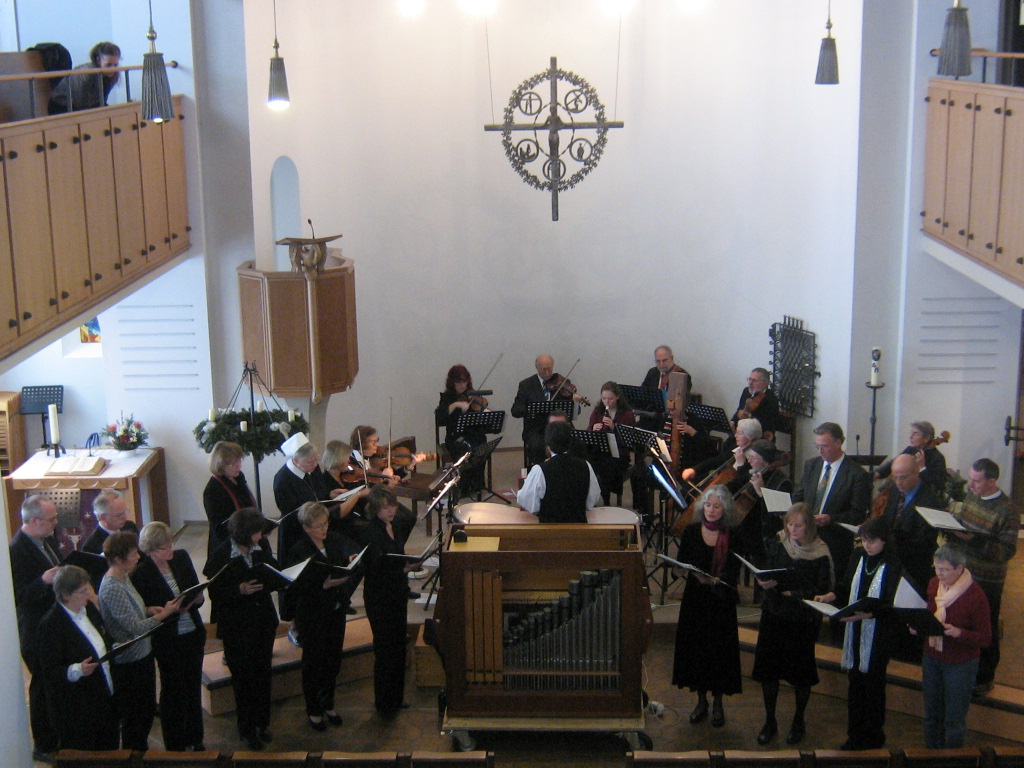 Authenticity of performance: A Baroque music ensemble playing Baroque period instruments, using period techniques, whilst dressed in contemporary garb. In the theatre and in music, the performers (actors, actresses, musicians) are responsible for realising a performance of the respective work of art, a stageplay, a musical concert. An historically informed performance of a play by Shakespeare, the women characters would be portrayed by actors, not actresses, as was the custom in the Elizabethan era (1558–1603) and the dialogue would be enunciated and pronounced in the Elizabethan style of speech.[2] In an historically informed performance, the actors and the musicians replicate the time period of the work of art they are performing, usually by way of period-correct language and costumes and styles of performance and musical instruments. The musicians would consider inauthentic any performance of the Elvira Madigan piano concerto that the pianist played on a contemporary grand piano, an instrument unknown to the composer W.A. Mozart (1756–1791).[2] Authenticity in Crypto art The genre of crypto art became feasible with blockchain networks of computers (e.g. Bitcoin), cybernetic technology that allows crypto artists to create digital art for sale and for collection.[41] Artists, such as Mike Winkelmann (aka Beeple), use blockchain technology to authenticate a work of art and establish provenance with a digital file permanently linked to the crypto artist who produced the artefact;[42] however, the blockchain technology also allows crypto artists to work anonymously.[43][44] The cybernetic authentication of Non-fungible tokens (NFT) allows collecting works of art that resist forgery, because the provenance of a work of art usually is private information unavailable for public examination.[45][46] |
芸術における真正性は、芸術作品や芸術的パフォーマンスが真正であると
みなされるさまざまな方法で明らかになる[1]。最初の区別は、名目上の真正性と表現上の真正性である。最初の意味において、名目上の真正性は、芸術作品
の作者を正しく特定すること、俳優や女優が劇作家によって書かれた戯曲中の役をどの程度正確に解釈すること、音楽家が芸術的な作曲をどの程度作曲者の意図
に忠実に演奏すること、芸術作品がどの程度そのジャンルの芸術的伝統に合致することである。第2の意味において、表現上の真正性とは、芸術作品が主題につ
いて内在する権威をどの程度備えているか、また芸術家の意図がどの程度作品に反映されているかということである[2]。 鑑賞者、聴衆、視聴者にとって、体験の真正性は、芸術作品を本来の環境で初めて目にしたときにしか味わえない感情である。彫刻や絵画の場合、現代美術館を 訪れる人々は、芸術家が作品を制作した当時の展示環境を模した空間で展示された芸術作品に出会う。そのため、美術館を訪れる人々は、美術品がオブジェとし て展示されているのを目にするだけで、本来の展示環境において美術品を見ることによって得られる美的体験、すなわち芸術家の意図を理解できない可能性があ る[3]。 芸術作品の真正性は、国際連合教育科学文化機関(ユネスコ)の世界遺産リストへの登録要件である[4]。(UNESCO)[4]、1994年の奈良文書 (Nara Document on Authenticity)では、芸術作品の真正性は、形やデザイン、素材や物質、用途や機能、伝統や技法、場所や環境、そして作品に込められた精神や感 情によって表現できると規定されている[5][6]。 名目上の真正性 来歴  来歴の真正性: 明王朝(1368~1644)嘉靖年間(1521~1567)の「黄龍瓶」は、16世紀には実用的な品物であり、21世紀には芸術品である。 美術品の真正な来歴とは、芸術家と作品の制作場所および制作時期を確実に特定することである[7]。そのため、美術品の専門家は、以下の4つのテストに よって真正な来歴を判断している。(i) 芸術作品に描かれた作家の署名の確認、(ii) 芸術作品の来歴を証明する歴史的文書の確認、(iii) 科学的証拠(キャンバスのX線検査、絵具の赤外線分光分析、木材の年輪年代学的分析)、(iv) 訓練された目を持つ鑑定家の専門的判断[8]。訓練された目を持つ鑑定家の判断である[8]。 文学評論家のライオネル・トリリングは『誠実さと真正性』(1972年)の中で、作品の由来が本物であるかどうかという問題には、作品の物理的条件や外見 に関わらず、その作品の出来栄えの質が極めて重要であり、明代の壺が本物なのか、それとも 巧妙な美術品の偽造であるかどうか[9]。美術品の来歴の真正性に対するこだわりは歴史的に最近であり、西洋の唯物論に特有のものである。東洋の世界で は、重要なのは美術品そのものであり、芸術家の正体や美術品の来歴は二の次である[10]。 美術品の偽造  美術品の偽造術: オランダの偽造名手ハン・ファン・ミーゲレンが描いた『エマオの晩餐』(1937年)。この絵をナチスの国家元首のゲーリングに本物と信じ込ませた。 画家ハン・ファン・ミーゲレン(1889-1947)は、キャリアを大幅に短縮せざるを得なかった結果、17世紀の画家、フランス・ハルス(1582- 1666)、ピーテル・デ・ホーホ(1629-1684)、ヘラルト・テル・ボッシュ(1617-1681)、ヨハネス・フェルメール(1632- 1675)などの偽の絵画を特別に制作することで、美術品の贋作師として生計を立てていた。 582–1666)、ピーテル・デ・ホーホ(1629–1684)、ヘラルト・テル・ボールフ(1617–1681)、ヨハネス・フェルメール (1632–1675)などの17世紀の画家の偽作を専門に制作していた。ファン・ミーゲレンは、批評家や美術の専門家を欺くような見事な絵画を制作し、 専門家たちはその贋作を本物の傑作として受け入れ、賞賛した。特に『エマオの晩餐』(1937年)は、アブラハム・ブレディウスなどの専門家によって本物 のフェルメールとして認められた。 結局、第二次世界大戦(1939年~1945年)を生き延びるために、ファン・ミーゲレンはオランダを占領していたナチスに贋作を売りさばいた(1940 年~1945年)。戦後のオランダ国内での清算において、オランダ当局はファン・ミーゲレンをナチスに国宝を売り渡した協力者として逮捕した。裏切り者の 死を免れるため、画家ファン・ミーゲレンは、自分がナチスに偽画を売っていたことを証明するために、オールドマスターの絵画の偽造者としての技術力を披露 した[11]。 偽造美術品を購入してしまうことを防ぐため、売り手と買い手は、美術品が作品の作者として特定された芸術家の真の創作物であることを証明する文書としての 真正証明書を使用する。しかし、偽造真正証明書のビジネスは多く、美術品の金銭的価値を決定する 美術品の価値[12]。偽造絵画の偽物性は、美術史の文献的証拠や、美術品の保存技術から得られる科学的な証拠によって発見される[13]。例えば、年代 測定など、オールドマスターの絵画の出所の真正性を立証するために用いられる[14][15]。真正性の証明書に示された潜在的な金銭的価値は、コレク ターや美術商に偏見を与え、時には作家によって確立された確かな出所の近年の美術品を購入する傾向がある[16]。 芸術としての贋作 芸術作品としての贋作に対する批評的な関心はまれである[17]。しかし、建築と芸術の評論家であるアリーネ・B・サーリネンは、1961年の論文「完璧 な偽物」の中で、「もし贋作が極めて巧妙で、最も徹底的で信頼できる検査を経てもなお、その真偽が疑わしい場合、それは 紛れもなく本物であるのと同じくらい満足のいく芸術作品ではないのか?[18]『創造の行為』(1964年)の中で、アーサー・ケストラーは「芸術として の偽造品」というサーリネンの主張に賛同し、偽造品が芸術家の作品群にふさわしいものであり、本物の芸術作品と同じ美的快楽をもたらすのであれば、 、その偽造された芸術作品は盗作した芸術家の作品の展覧会に展示されるべきである[19]。 美術業界では、巧みに作られた偽造品の芸術的価値は、オリジナル作品の来歴の真正性を重視するキュレーターにとって無関係である[20] — 特に、美術作品の来歴を正式に立証することは可能性と蓋然性の問題であり、芸術家が作品の真正性を保証しない限り、 アーティストが作品の真正性を保証しない限り、作品の来歴を正式に証明することは、可能性と蓋然性の問題であり、確実性とは言い難いからである[21]。 とはいえ、芸術界にとって、偽造は偽造であり、偽造の芸術的完成度や、偽造者の芸術的才能、また批評家や一般大衆が偽造を本物の芸術作品であると信じてい たとしても、偽造は偽造であることに変わりはない[17]。 機械的複製  芸術の機械的複製: ルネサンス期のフランス人作曲家ジョスカン・デ・プレ(Josquin des Prez、1450-1521)の1611年の木版画のファクシミリ。 油絵からコピーされた本物の芸術作品である[22]。レリーフ印刷は芸術の機械的複製の一種であり、したがって、(i)芸術家が (ii) 職人がその絵を元に浮世絵版木を彫り、通常、絵を木版に彫る際に元の絵は破棄される。そして、(iii) 版木は、絵の浮世絵版画を刷り終えた時点で廃棄される。芸術作品の制作にはこの 3 段階のプロセスが必要であるが、印刷された複製画は芸術作品の最終的な成果物であるにもかかわらず、真正な芸術作品は存在しない。 芸術作品の複製には真正性がないのである[23]。 「機械的複製時代の芸術作品」(1935年)というエッセイの中で、ヴァルター・ベンヤミンは、当時登場したばかりの視覚メディアである写真と映画を、芸 術作品を何度でも複製できる機械として論じた。機械複製時代の芸術作品」(1935年)というエッセイの中で、ヴァルター・ベンヤミンは、当時登場したば かりの視覚メディアである写真と映画について、芸術作品を何度も複製できる機械として論じています。しかし、どの複製も芸術的に真正なオリジナル画像では ありません。オリジナル画像を再現する(しかし、創造するのではない)視覚メディアである写真と映画は、芸術の真正性の概念を「儀式としての芸術」から 「政治としての芸術」へと転換し、芸術作品を愛好家だけでなく大衆にも身近なものにする[24]。 ベンヤミンの観察の現代的な延長線上にあるのが、彫刻家デュアン・ハンソン(1925-1996)による『サンベーター』(1971)の永遠の真正性であ る。 1971年に制作されたデュアン・ハンソン(1925-1996)の彫刻作品『サンベーター』(日光浴をする女性が長椅子に寝そべっている姿)は、保存修 復担当者に、色あせや傷みが目立つようになった彫刻の一部(帽子、水着、タオルなど)を交換することを許可した。コンピュータとインターネットの芸術的制 作と機械的複製能力に照らし合わせると、メディアアーティストのジュリアン・H・スキャフは、デジタル画像(絵画、静止画、映画のコマ)の出所の真正性は 判断できないと述べた。なぜなら、デジタルアート作品は通常複数のバージョンで存在し、各バージョンは作成されたものではなく、芸術とは何かについての異 なる観点を持つ別のデジタルアーティストによって制作されているからである [26] 体験の真正性  芸術作品の体験の真正性は一時的なものであり、そのため、ヒンドゥー教の女神ターラの像(スリランカ、8世紀)を世俗的な場所(美術館)で見るのと、女神 としての像を本来の場所(寺院)で見るのとでは、美的体験が異なっている。 芸術作品の体験の真贋は、芸術家が作品を制作した本来の環境で作品を鑑賞した鑑賞者にのみ与えられる。別の環境では、体験の真贋(目的、時間、場所)は不 可能である。したがって、西洋社会では、美術館での展示は、芸術家が作品を制作した本来の環境を(文字通り、比喩的に)再現したものである。美術館で作品 を単独で展示すると、鑑賞者は作品を目にすることはできるが、芸術作品の美的体験は損なわれる。本来の文脈(場所、時間、目的)が欠けているため、本来の 文脈における芸術作品の体験よりも美的鑑賞が制限されてしまう。本来の文脈では、芸術作品と文脈が芸術家の美的意図となっている。 本物の体験は唯一無二であり、再現できないものであることを認識した美術館の学芸員は、芸術家が作品を制作した当時の状況を再現した、文字通りの展示や比 喩的な展示で作品を展示している。 人工的な照明で演出された美術館の展示は、鑑賞者に芸術作品の感覚的な体験を提供する[3]。その商業的な流れの中で、ツアービジネスは「芸術体験」を芸 術体験の真正性の模造品として販売している。観光客はミラノにある18世紀のオペラハウス、スカラ座でオペラを観劇することで「文化」を消費する。 オペラに精通した本物の観客は次第に興味を失い、定期的に観劇しなくなるが、オペラハウスはビジネスであり、文化を愛する人々や、おそらくはオペラを理解 している観光客のために公演を続ける。同様に、芸術家として生計を立てるために、太平洋諸島出身のダンサーたちは観光客を楽しませ、啓発するために「太平 洋諸島文化」を披露している。太平洋諸島出身のダンサーたちのパフォーマンスは、本来の文化に忠実であるという点で名目上は本物の芸術かもしれないが、芸 術体験の真偽性は疑わしい[2]。 文化の真正性  文化の真正性:ハイチ・ブードゥー教の悪魔の像。  文化の真正性:木彫りのブルルは、祖先の霊の存在によって力を得る祖先を様式化した表現である。15世紀に遡るブルルの置物は、地域の稲作を守り、伝統的 な儀式に登場し、フィリピン諸島を訪れる観光客に販売される土産品となっている。 作品の由来が本物であるということは、その芸術作品の物質的な存在、芸術家の正体、そして芸術家がいつどこでその芸術作品を作ったかを証明する。文化的な 真正性、つまりジャンルや芸術的スタイルは、その芸術作品が芸術的伝統の真の表現であるかどうかに関わってくる。芸術作品の文化的真正性への関心は、通 常、ジャンルの「純粋な伝統」に基づいて制作された芸術作品の芸術的価値の高さを示すロマン主義に由来する。このような理想主義的な視点は、通常、ナショ ナリズムや人種差別、部族主義、そして美学の誤解から派生している[27]。 芸術作品は、そのジャンルの本質的な属性であるスタイル、素材、制作プロセスで制作された場合に真正である。文化的な真正性は、その民族の芸術家たちに よって生み出された芸術的伝統から生まれる。あるジャンルの芸術作品は、その民族の芸術家によって制作された場合にのみ真正であり、したがって、真正なイ ヌイットの芸術作品はイヌイットの芸術家によってのみ制作される。表現の真正性に関する哲学的・社会学的な視点は、文化の盗用に伴う芸術作品の盗用から芸 術家を保護するものである。しかし、エッセイ「Race, Ethnicity, Expressive Authenticity: Can White People Sing the Blues? しかし、ジョエル・ルディノフはこれに反対し、文化の盗用を擁護し、文化の真正性を保護する姿勢は人種差別の一種であると述べた[28]。 アートビジネス 西洋では、19世紀末にヨーロッパの探検家や植民地開拓者がアフリカ、アジア、オセアニアの文化や民族グループと出会い、取引を行った結果、「原始美術」 の市場が生まれ、発展した。芸術的には、探検家や植民地開拓者たちと取引をした先住民たちは、布やガラスビーズなどヨーロッパから持ち込まれた新しい素材 を自分たちの芸術作品に素早く取り入れた。しかし、ヨーロッパの収集家や美術商は、先住民とヨーロッパの素材を混ぜ合わせた「本物ではない」混合メディア のプリミティブアートは購入しなかった。不確かな原始美術に対する抵抗を克服するため、美術商は現地の素材を使って美術品を制作し、西洋人が本物の先住民 の美術品として受け入れ、購入できるようにした[29]。 19世紀の美術品の制作ビジネスモデルは、西洋の収集家や愛好家に本物の美術品を販売する現代の慣習として残っている。通常、工芸品は、宗教儀式での使 用、古さ、貴族や王族との関連性といった、人気の高い属性や本物の由来を持つという印象を与えるようにデザインされ、修正される[30]。20世紀、 1940年代、ハイチの芸術家たちは、外国のビジネスマンから提供された「ブードゥー教の像」の商業用複製を作成し、「本物のブードゥー教の芸術」として 販売した。ハイチ人アーティストにとって、報酬を得て制作したハイチの芸術文化の外国人の表現は、文化の盗用に伴う芸術の窃盗と、白人の外国人がハイチ・ ブードゥー芸術を宗教芸術ではなく商業商品として捉えていることを如実に示していた[3 1] 神々と土産品 美術品と観光客向けの粗悪な工芸品とを区別するために、美術品コレクターは、美術品が本来の用途に合わせて芸術的制作(デザイン、素材、製造)の認知され た基準を満たしている場合に、芸術的に真正であるとみなす。フィリピン諸島では、イゴロット族が、先祖の霊の存在によって力を得る祖先の高尚な象徴である 木彫りのブルル人形を、稲作の守り神として歴史上ずっと使用してきた[32]。 現在でも伝統的な儀式で使用されているが、イゴロット族は観光客向けに記念品のブルル人形を生産している。これは芸術としてのブルルの価値を損なうもので はない。文化の中では、イゴロット族の家族は、記念品のブルルを伝統的な儀式にふさわしいものとして受け入れているかもしれない。それにより、記念品のブ ルルに、本来は存在しない芸術的・文化的真正性が付与されることになる[2]。その観点からすると、宗教的儀式で実際に使用される「部族の仮面や彫刻」の 方が商品価値が高い。特に、その起源の真正性が、土着の芸術家が伝統的なデザイン、素材、制作技術を用いてその工芸品を作ったことを証明する場合、その価 値はさらに高まる。このような西洋による土着芸術の過剰評価は、その作品が原始民族が実践する芸術の伝統や様式を忠実に反映したものであるという前提に基 づいている[33]。 作り出された伝統 フランス領ギアナのマルー族の芸術的進化は、芸術と商業、芸術家と美術商の相互作用を通じて現代の芸術様式が発展したことを示している。マロン族の芸術の 長い歴史と強い伝統は、ボートのパドルや窓のシャッターといった日常的な物の装飾の形で顕著に表れている。マロン族の芸術作品を販売するために、ヨーロッ パの美術品収集家たちは、美術品市場や収集家、美術館に販売する「土着芸術」に象徴的な意味を割り当てた。芸術作品の目的、価値、価格について芸術家と実 業家との間で相互に誤解が生じているにもかかわらず、マールーン族の芸術家たちはヨーロッパの記号言語を用いて、先住民の芸術作品に象徴的な意味を付与 し、生計を立てていた。しかし、若いマールーン族の芸術家たちは、(商業的な)象徴主義が芸術ビジネスからではなく、先祖代々の伝統から来ているのだと誤 解している可能性がある[34]。 表現の真正性 表現の真正性は、芸術作品が芸術家の意図を反映した独自の権威を持ち、美的表現のオリジナル作品であるという事実から生まれる。音楽演奏においては、演奏 家や歌手の演奏が芸術性に忠実であり、他のアーティストの模倣ではない場合、表現の真正性と演奏の真正性が相反することがある[2]。作曲家や楽曲の人気 よりも演奏家の人気が高いのは、歴史的に最近になってのことである。これは、独特な芸術的スタイルを持つカリスマ的なミュージシャンに対する表現の真正性 に対する人々の関心の高まりを反映している[35]。芸術的スタイルを持つカリスマ的なミュージシャンに対する人々の表現の真正性への関心の高まりを反映 している。 芸術と美学の世界では、表現の真正性という用語は、実存主義哲学で使用されている心理学用語「真正性」に由来している。この用語は、精神の健康を、現実世 界との関係についての自己認識として捉えている。この流れに沿って、ジャクソン・ポロック(1912-1956 、アルシレ・ゴルキー(1904年~1948年)、ウィレム・デ・クーニング(1904年~1997年)などの抽象表現主義者の芸術作品は、芸術家と世界 との関係について実存主義的な観点から理解されてきた。同様に、映画監督のジャン=リュック・ゴダールやイングマール・ベルイマン(1904年~1997 年)の映画芸術も同様である。 [37] 表現の真正性は、アーティストのスタイルと伝統の真正性から生まれる。したがって、文化集団にはすでに真正な芸術を生み出す土着のアーティストがいるた め、部外者の声の借用は認められない[38]。アメリカの音楽業界では、ヒップホップというジャンルは、もともとアメリカ社会で彼らに課せられた貧困、無 知、人種差別に対する不満を表現するために、貧しい黒人たちが作り出した音楽芸術であった。ヒップホップが芸術的なアンダーグラウンドから商業的なメイン ストリームへと移行し、収益を上げるようになったことで、その音楽の表現の真正性が失われたかどうかについては、アーティストの間で議論がある[39]。 パフォーマンスの真正性  パフォーマンスの真正性: バロック時代の楽器を演奏し、当時の奏法を用いながら、現代風の衣装をまとったバロック音楽のアンサンブル。 演劇や音楽において、パフォーマー(俳優、女優、ミュージシャン)は、それぞれの芸術作品、舞台劇、音楽コンサートのパフォーマンスを実現させる責任を 負っている。シェイクスピアの戯曲を歴史的に忠実に再現した舞台では、エリザベス朝時代(1558年~1603年)の慣習に従って、女性キャラクターは女 優ではなく男優が演じ、台詞はエリザベス朝風の発音で エリザベス朝時代の話し方[2]で発話される。歴史に忠実なパフォーマンスでは、俳優や音楽家は、通常、時代を正しく反映した言語や衣装、パフォーマンス スタイル、楽器を用いて、演じている芸術作品の時代を再現する。音楽家たちは、作曲家 W.A. モーツァルト(1756-1791)が知らない楽器である現代のグランドピアノでピアニストが演奏する『エルヴィラ・マディガン』のピアノ協奏曲は本物で はないと考えるだろう[2]。 暗号アートにおける真正性 暗号アートというジャンルは、ブロックチェーンネットワーク( 例えばビットコイン)や、暗号アーティストがデジタルアートを制作し、販売や収集ができるようにするサイバネティック技術によって可能になった。マイク・ ウィンケルマン(別名ビープル)などのアーティストは、ブロックチェーン技術を使用してアート作品の真正性を証明し、その作品を制作した暗号アーティスト に永久的にリンクされたデジタルファイルで来歴を確立している。 42]しかし、ブロックチェーン技術により、暗号アーティストは匿名で活動することも可能になる[43][44]。NFT(Non-fungible tokens)のサイバー認証により、偽造が困難な芸術作品の収集が可能になる。通常、芸術作品の来歴は非公開情報であり、一般には確認できないからだ [45][46]。 |
| Fine art authentication Appropriation (art) Authentication Authenticity (philosophy) Auteur theory False document Folklore Forgery Plagiarism Selling out Stuckism Tradition |
美術品の真贋鑑定 盗用(芸術) 真正性の証明 真正性(哲学) オーサー理論 偽文書 民間伝承 偽造 盗作 裏切り スティッキーズム 伝統 |
| https://en.wikipedia.org/wiki/Authenticity_in_art |
リ ンク
文 献
そ の他の情報
Copyleft, CC, Mitzub'ixi Quq Chi'j, 1996-2099
☆
 ☆
☆